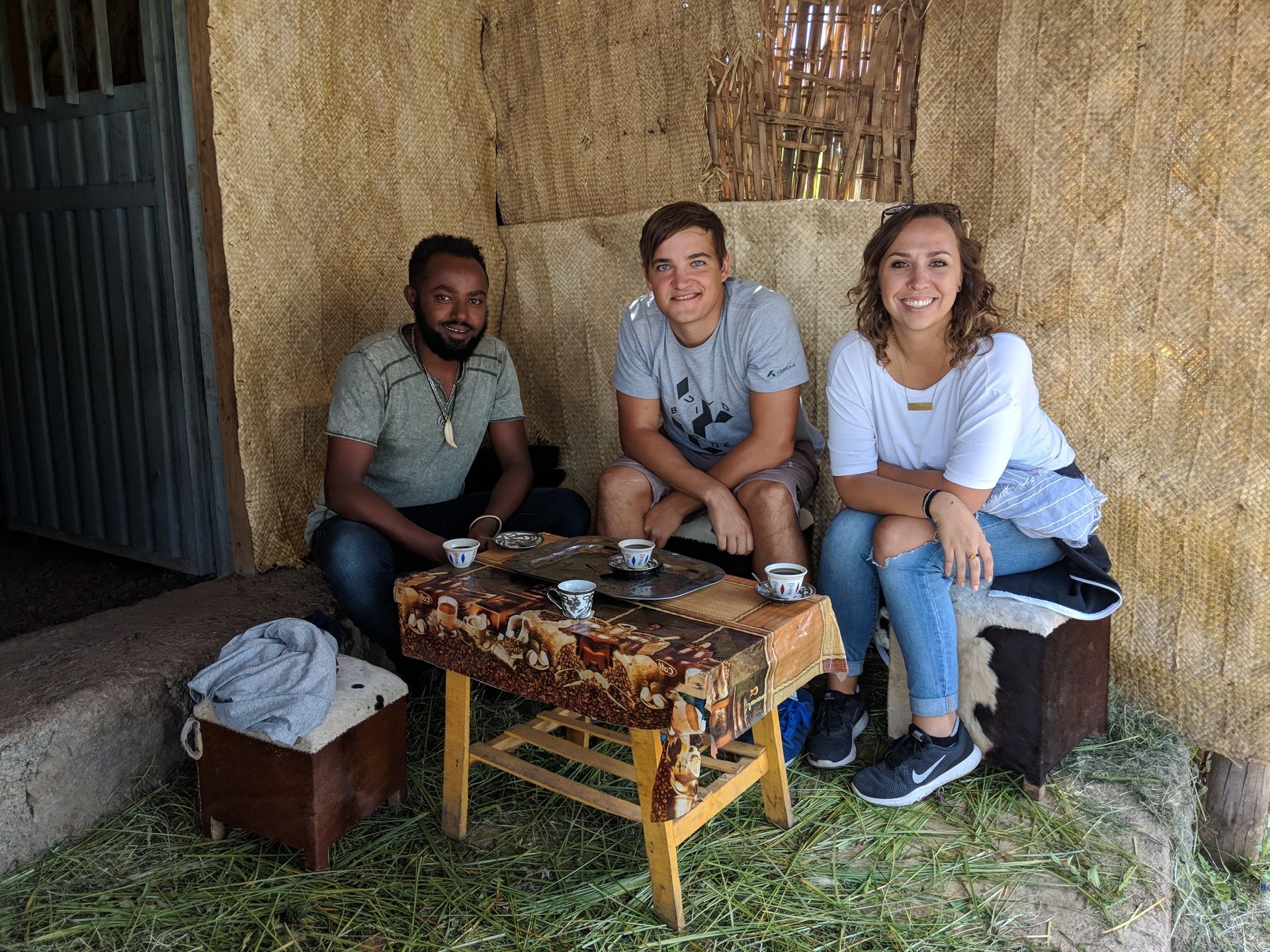Countless coffees at 8,000 feet
Caffeine-assisted explorations
The overnight flight from Vienna to Ethiopia took a solid 14 hours (including one layover) so by the time we arrived in Addis Ababa we were feeling nice and sleepy. As in, Soph legitimately fell asleep while we were planning our next move.
Fortunately, when it comes to caffeine, Ethiopia has you covered. This is, after all, the birthplace of coffee, and we wasted no time bringing Soph back to the land of the living, with successive service stops at Tomoca and Karavan Coffee.
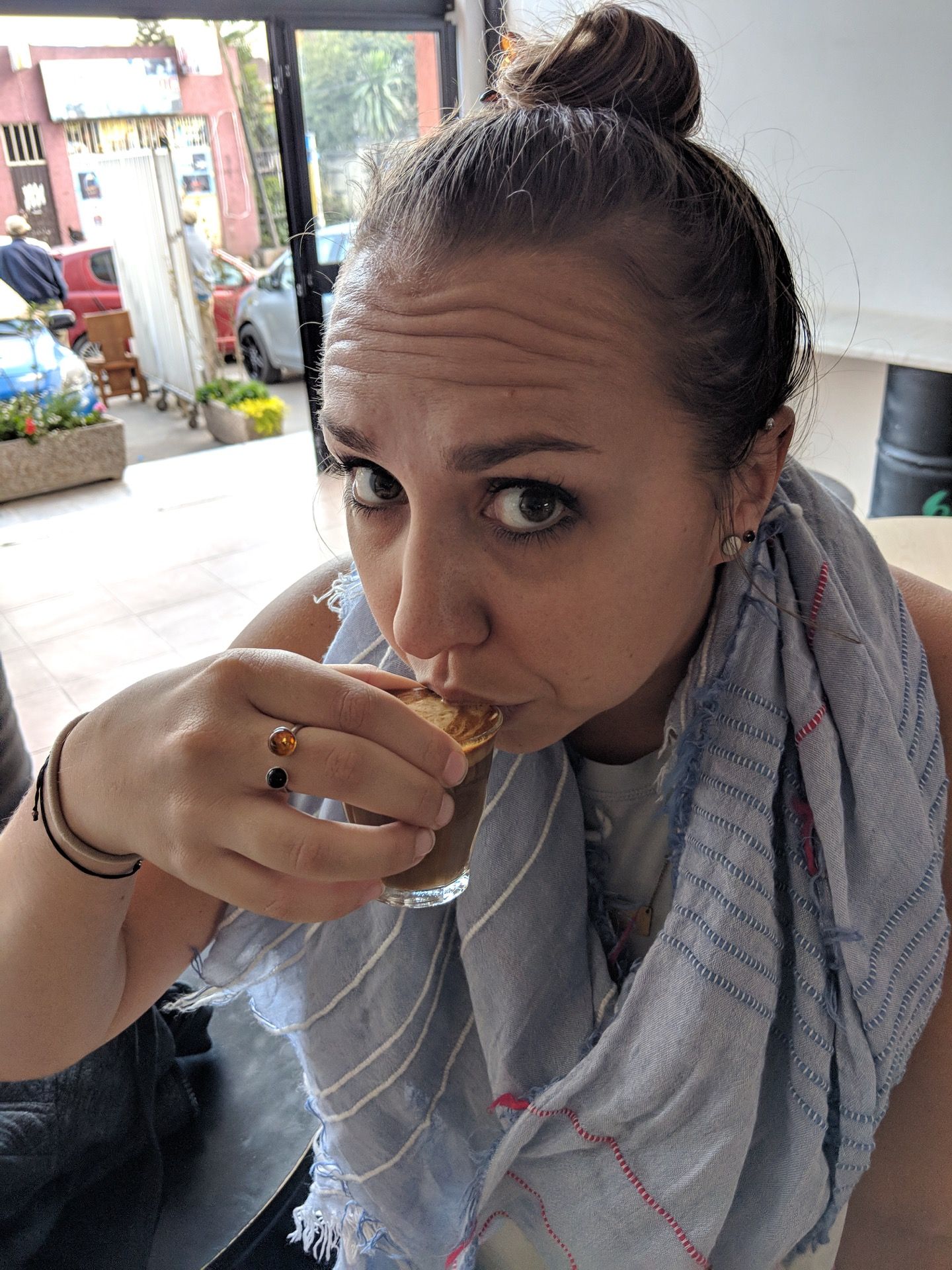
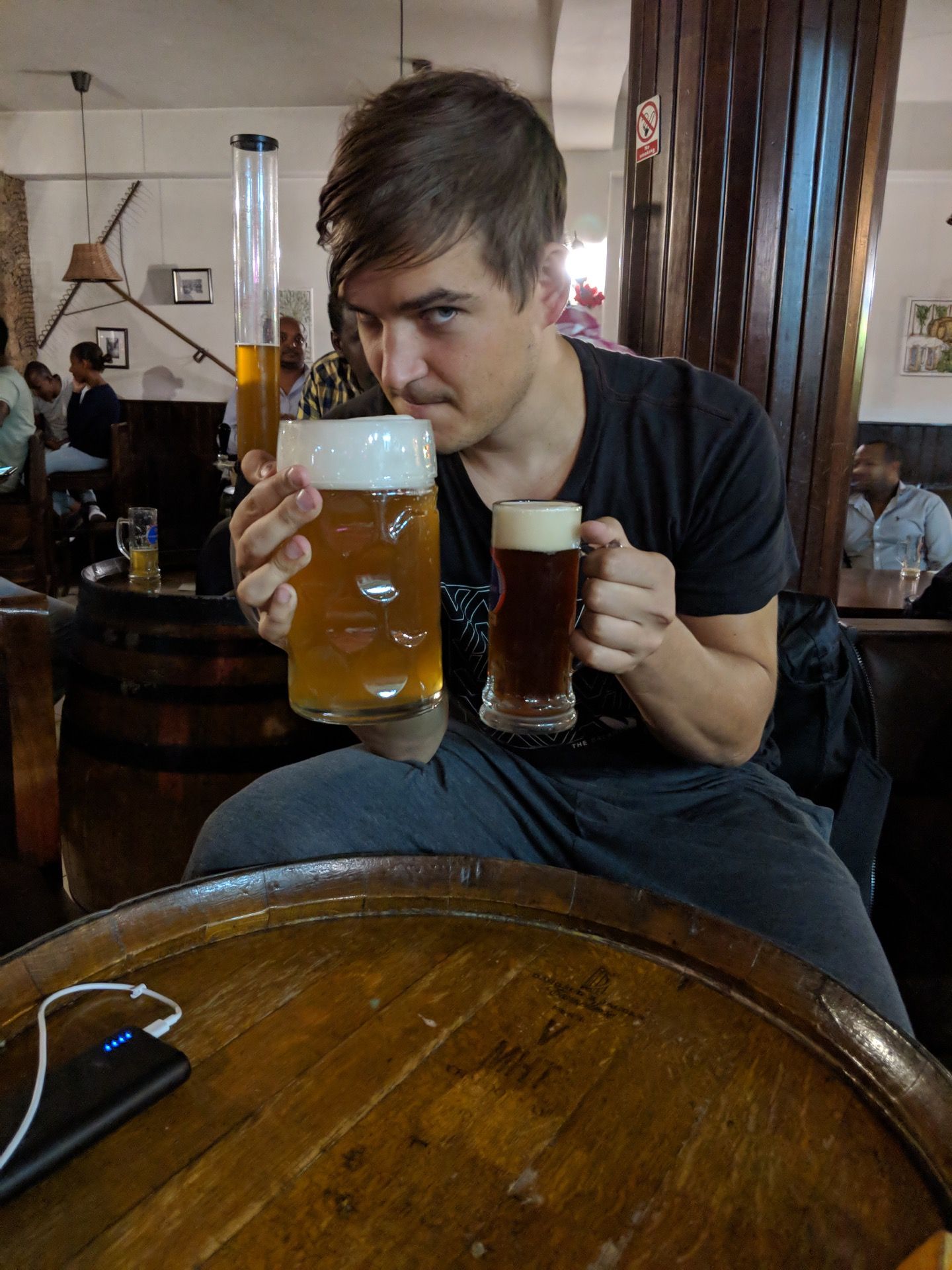
Left: Soph comes back to life. Right: Mirek comes back to life.
Our pre-coffee plan was to take a chill night off and rest our weary bones. Our post-coffee execution had us beelining to the nearest microbrewery (Beer Garden Inn), and ultimately spending the evening at a traditional Ethiopian song-and-dance event at the Yod Abyssinia cultural center.
The beer at the brewery was surprisingly delightful (go with the "Blondie"), our meal at the cultural center was a delicious cornucopia of meats and spices, and the show itself was a lot of fun.
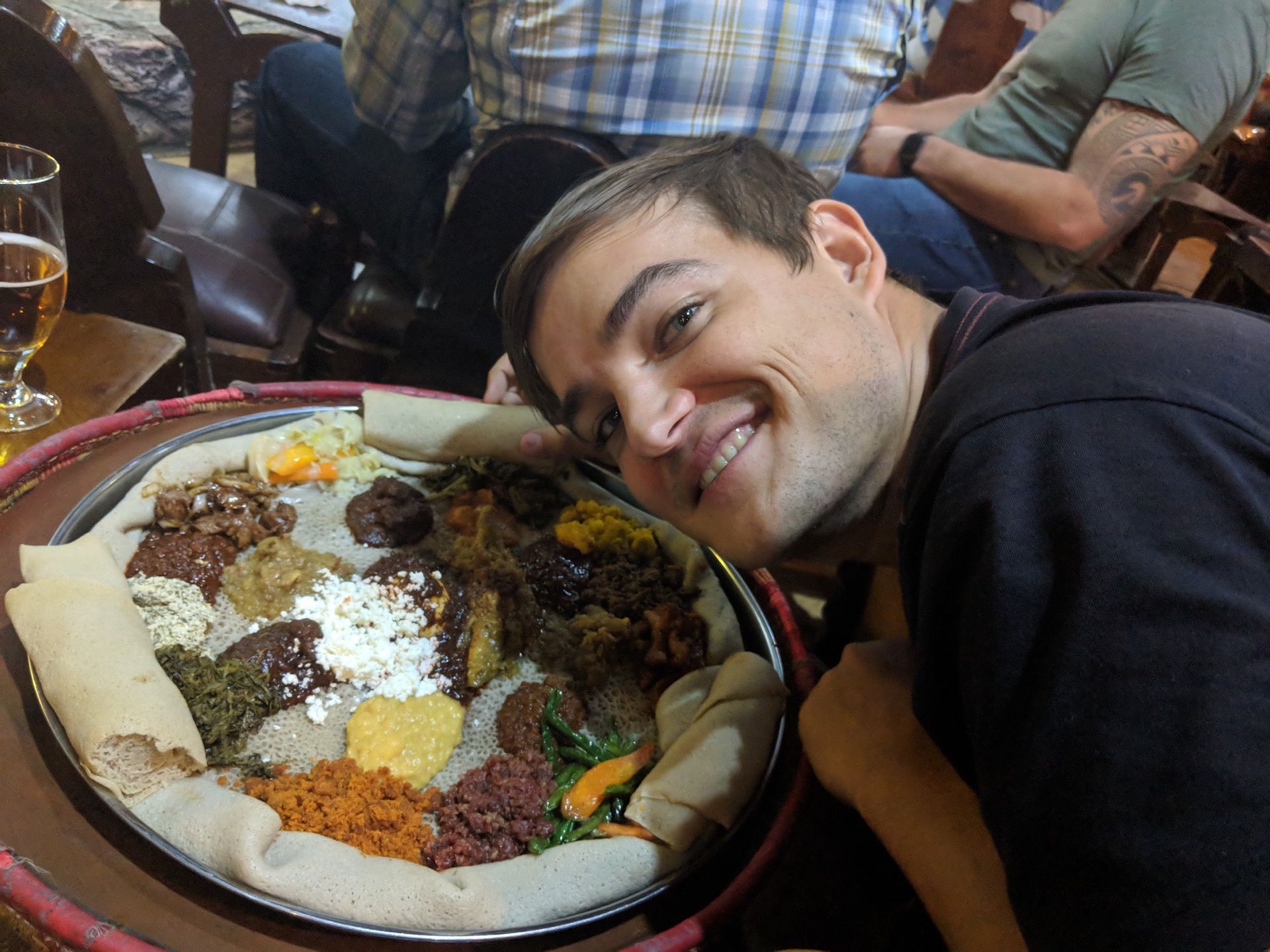
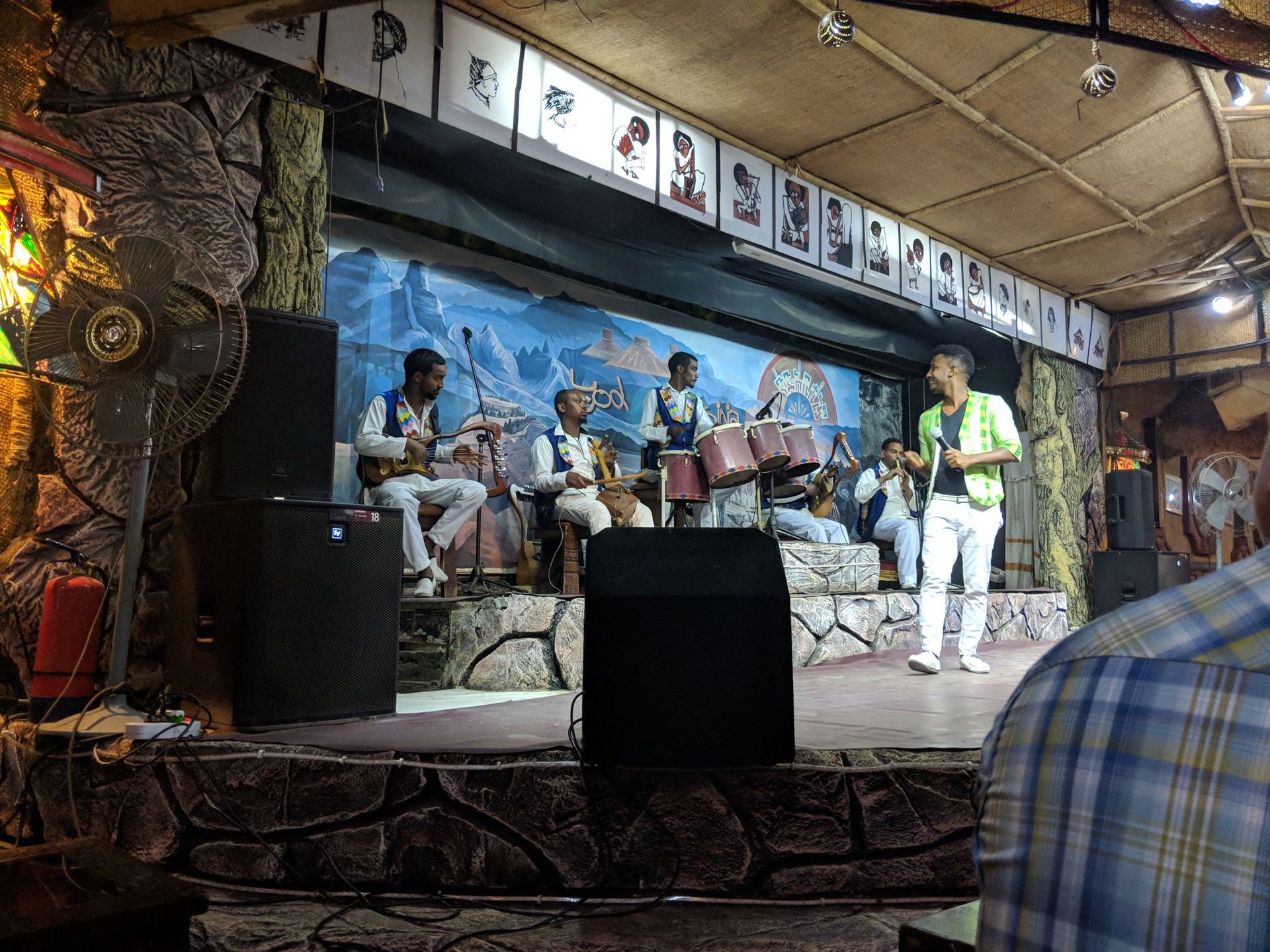
The rolled-up flatbread on the left is Injera. Ethiopians LOVE the stuff: I don't think there's a single meal we had without it. It's like... spongy styrofoam.
Eventually the caffeine started wearing off, so we check out one more nearby microbrewery (Bole - meh on this guy) and took a cab home. Addis Ababa may be one of the safest cities in Africa, but you're still advised to avoid unlit streets once the sun goes down.
Twelve miles by foot
The next day we set out to explore the city proper. First stop: coffee! This time we had a pot-pour vs. macchiato faceoff at Yeshi Buna (the latter won, but damn if it all ain't delicious).
Next stop: food! Ethiopian goes hard on beef, so we stopped by a butcher shop / restaurant (it's a common pairing, actually) called Yilma. When we asked for a menu we were met with an blank (amused?) stare. Turns out there is none! Better come prepared.
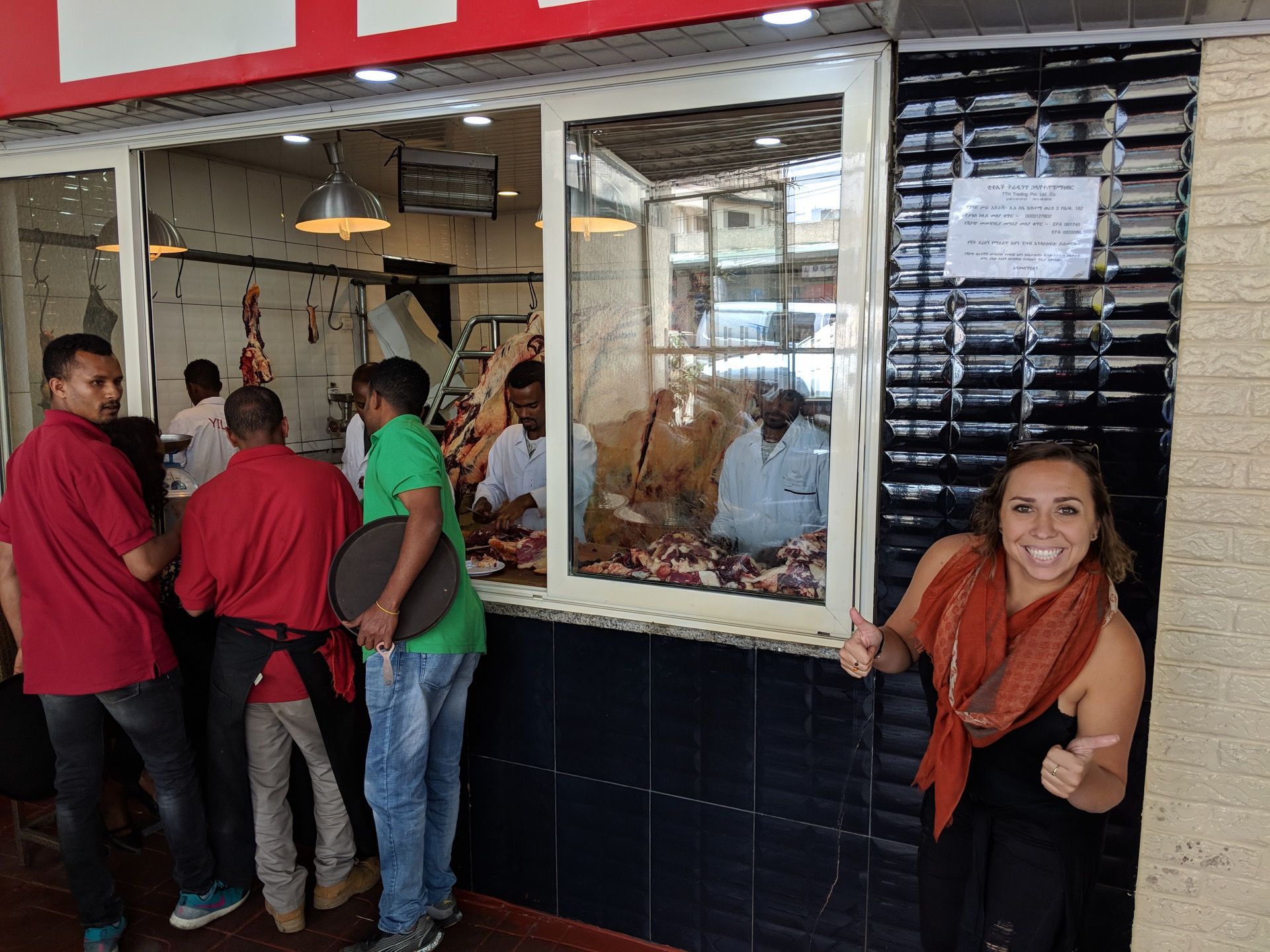
Refrigerating beef isn't really a thing, but we were none the worse for wear.
Thankfully we knew wanted to try "tibs" (an Ethiopian beef specialty, think steak bits), and otherwise I pointed at the raw hunks of meat sitting at the table next to us and got a half kilo of "that."
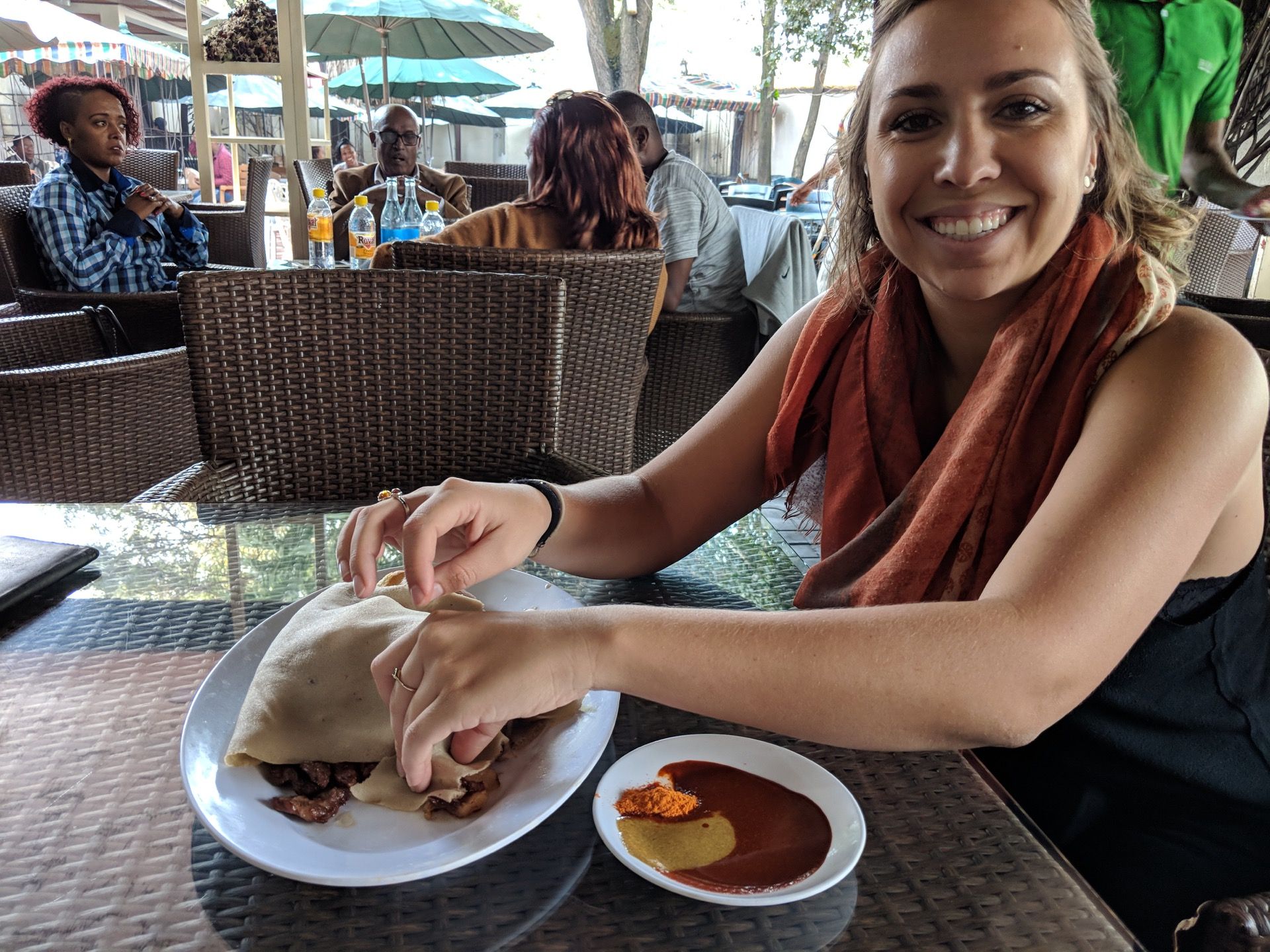
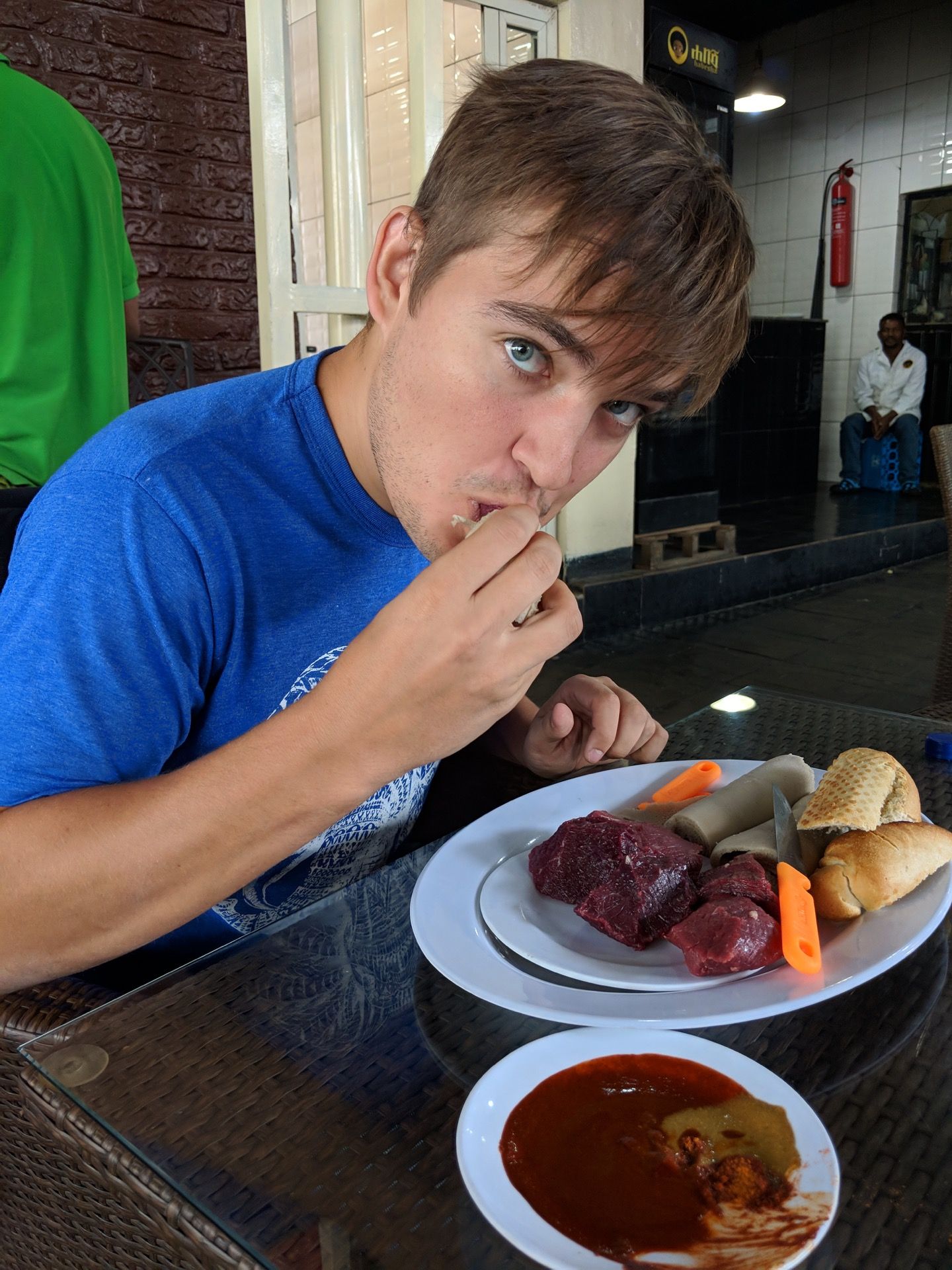
On the left: "tibs." On the right: "that."
The tibs was amazing, and probably my favorite meal of the trip. The raw steak (pre-steak?) was fun, though honestly a bit bland. It's seriously just hunks of raw meat with a side of dipping sauce. I took matters into my own hands by mixing it with the tibs.
Pun intended: in Ethiopia you eat everything with your hands. I'm pretty sure they don't even have a word for "fork."
The rest of the day was mostly dedicated to wandering through the city.
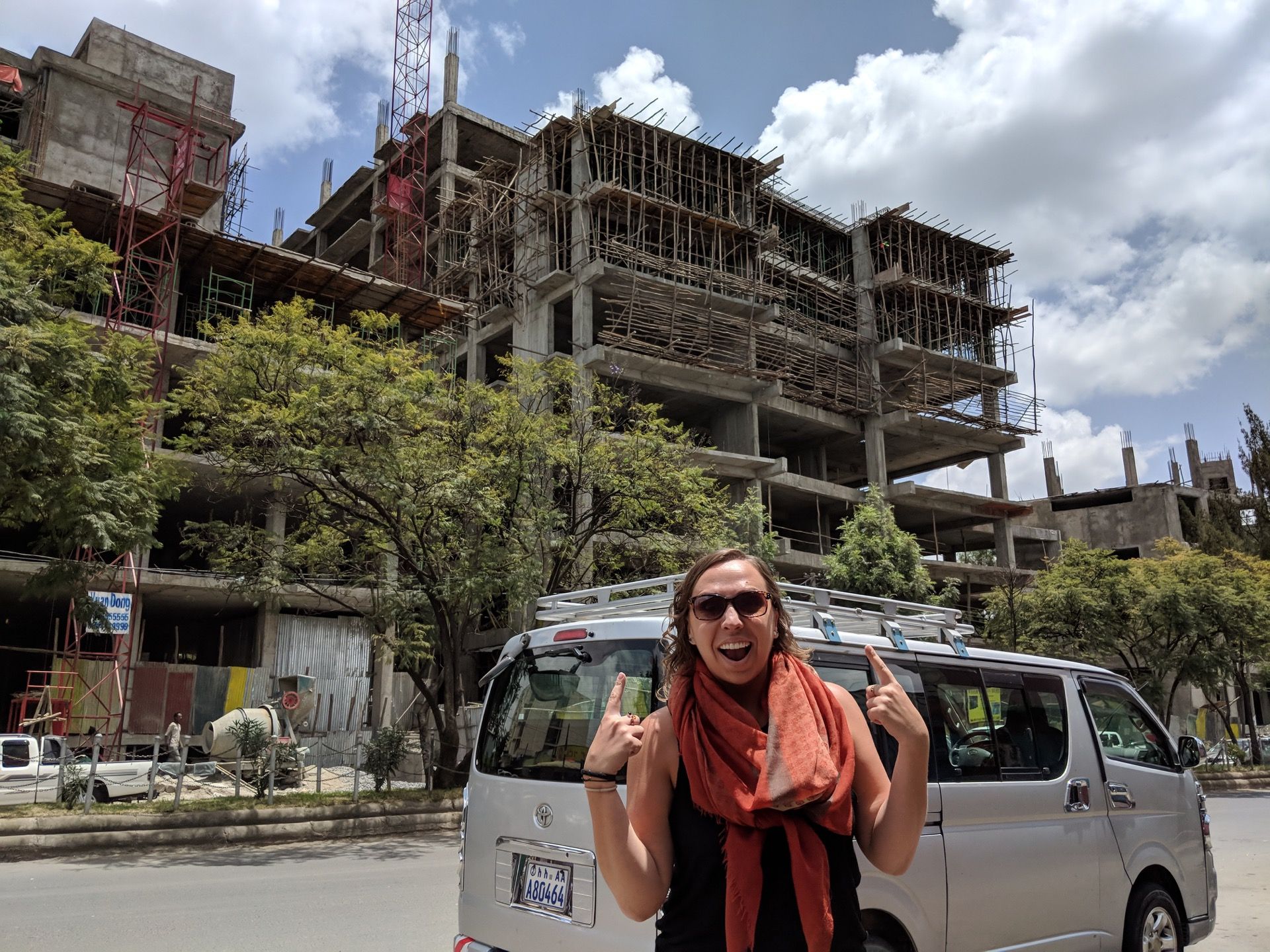
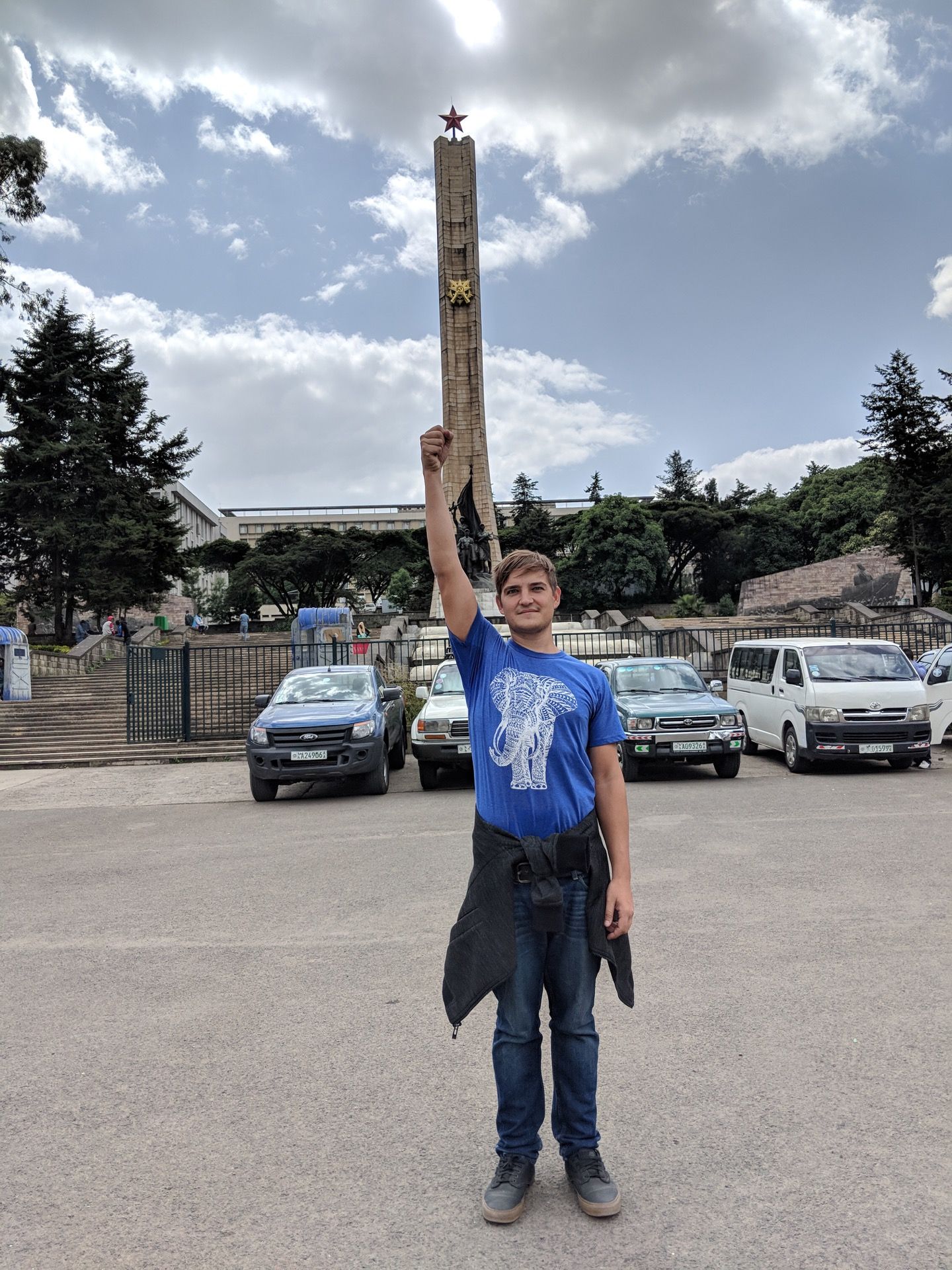
Left: construction safety 101. Right: uh, communist monument, I think?
Our main destination was the Addis Mercato, which is less a "market" (in the tourist sense) and more a square mile of clothes, car parts, sinks, toilets, scrap metal, and mottled mountains of miscellaneous junk. It was, in a word, INSANE.
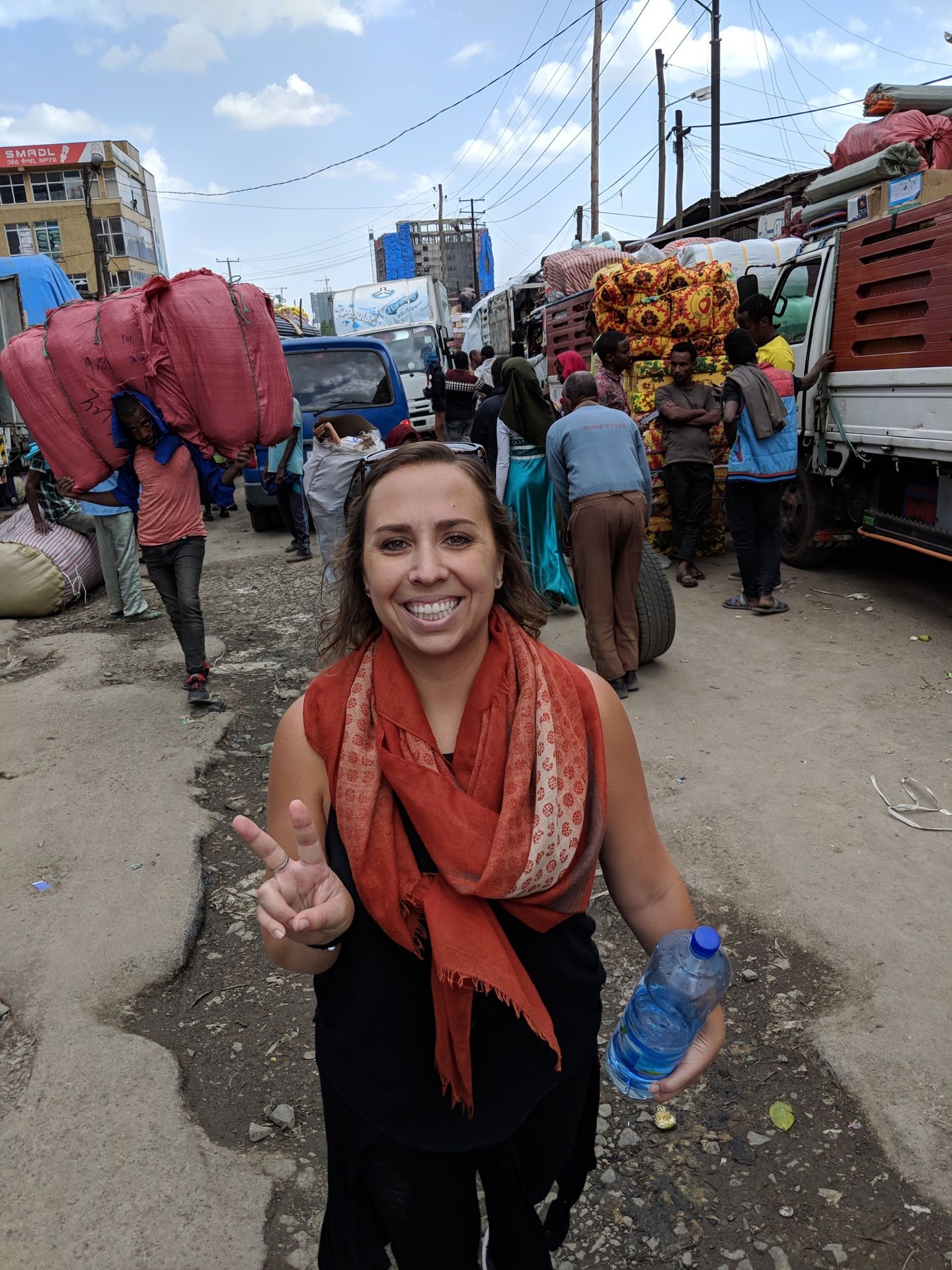
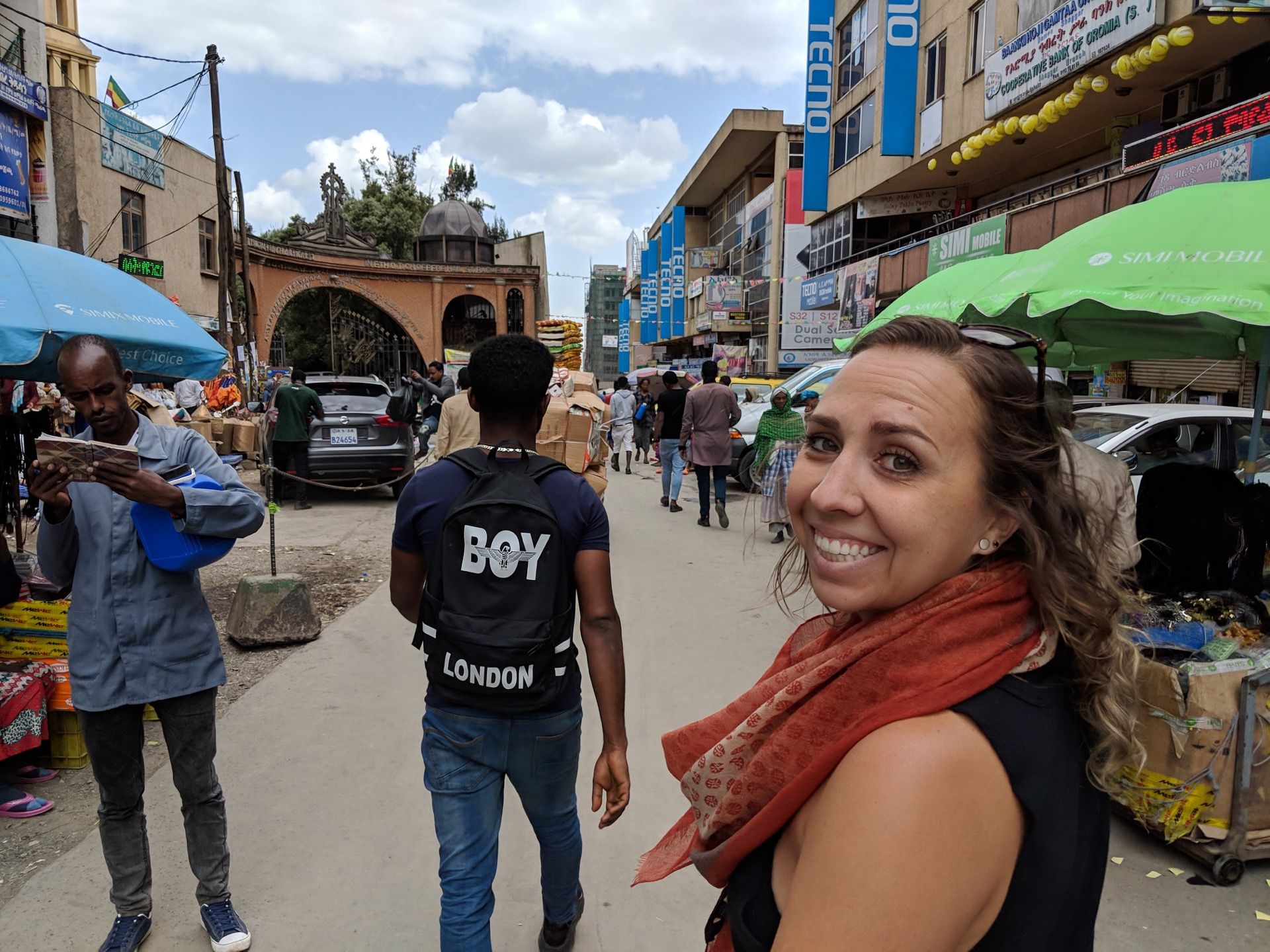
These side street pics are about 250% more chill than the heart of the market.
The streets were teeming with cars, motorbikes, and hordes of people carrying towering mounds of stuff on their heads, all of it tetris-packed to the point of immobility. It was an experience, to be sure, but ultimately one I'd stamp as skippable.
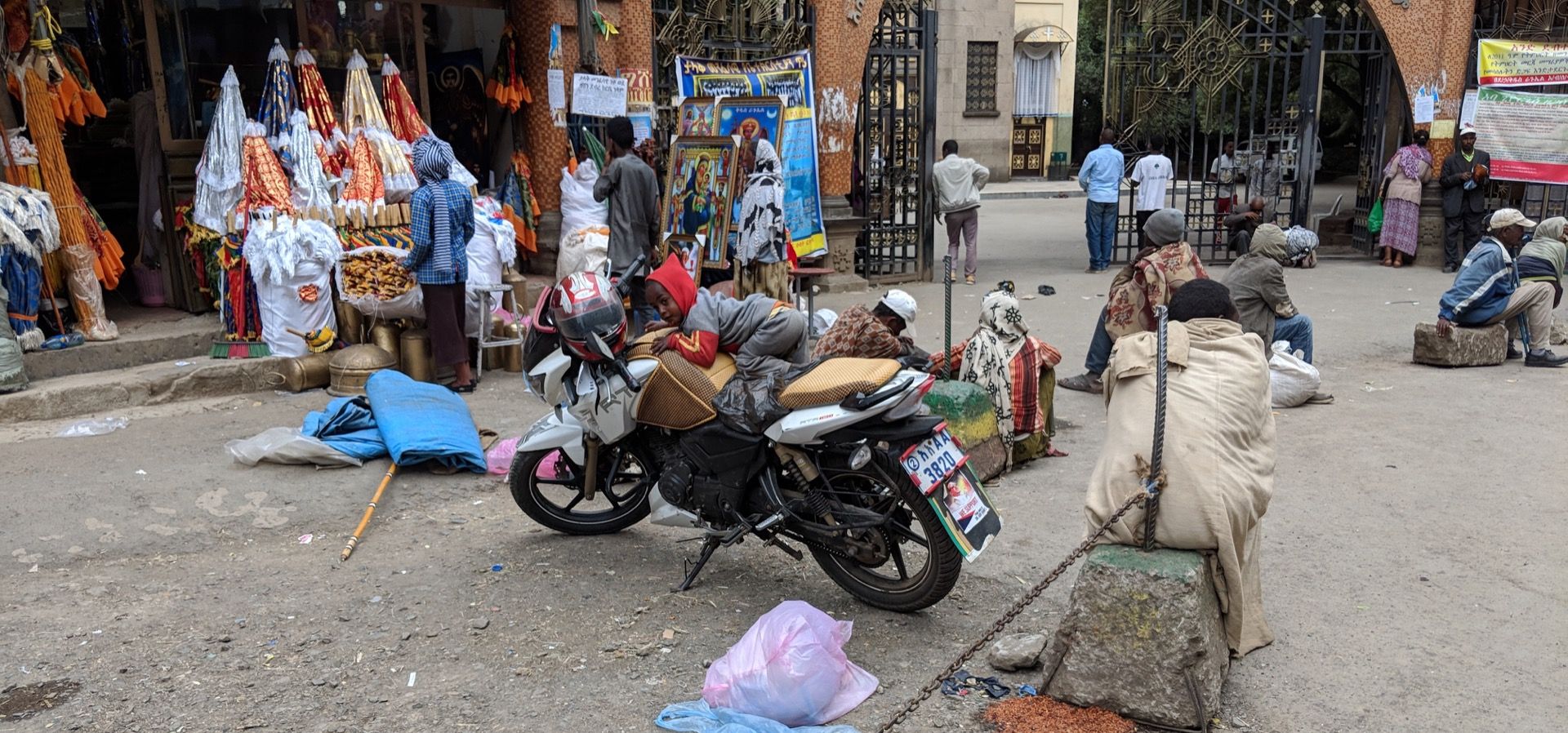
Sidenote: this kid chillin' on his motorcycle is a gangsta.
Also skippable: the Holy Trinity Church. At least, that's what we decided as soon as we found out it the entry fee was 200 birr. To put that in perspective, 200 birr buys you almost 7 beers. It was a matter of principle.
What's not skippable is grabbing a coffee at the nearby Tomoca Coffee. This is probably the most well-known coffeeshop in Addis Ababa, and for good reason. We even got some beans to go for the Kilimanjarbros.
Sidenote on coffeeshops: almost none we found had any WiFi, and most didn't even have tables to sit at. Coffee in Ethiopia is a social activity, so don't bother bringing your laptop!
Our final stop of the day was St. George's Brewery on the other side of town. The place was dark, packed with locals, and totally awesome. It felt like a warehouse-based African take on a German beer hall. And the beer? Pretty damn good, actually!
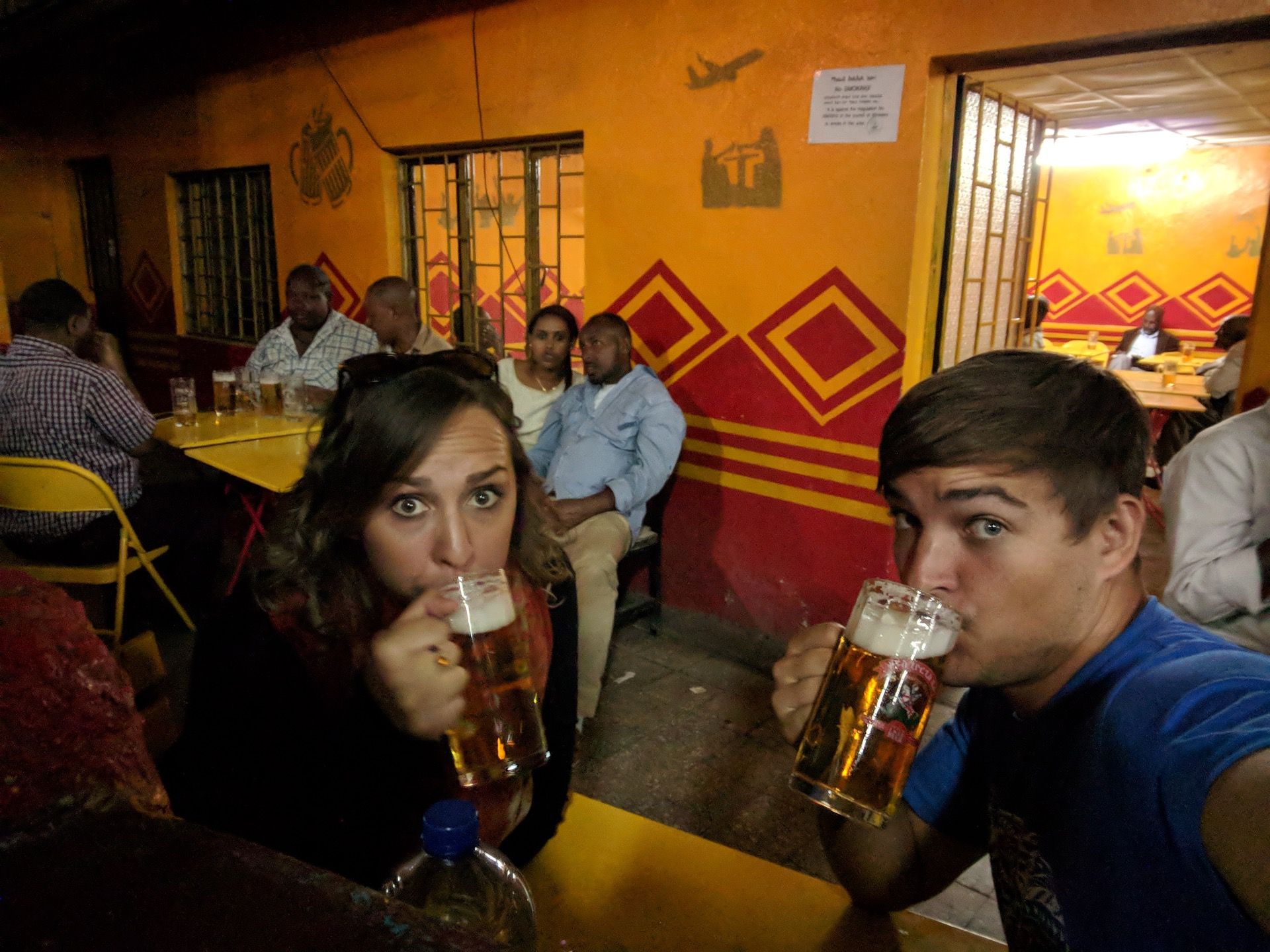
Quite quaffable, and thus quite a quantity was quaffed.
We felt a bit lighter on the walk home, but 12 miles is 12 miles. Phew!
A day out in the country
The next day we booked a guided day trip on Viator, our primary destination being the Debre Libanos Monastery. It was a long (2-3 hour) ride, but our guide Kibrom spent it dropping knowledge like a boss, so it flew right by.

Overlooking Addis Ababa (here at about 9,500 feet above sea level).
- Tourism accounts for <4% of="" the="" country's="" gdp<="" li="">
- It's one of the only African countries never to serve as a European colony
- The population is about 105 million strong (and growing)
- Religion is a really, really big deal here (2/3 christian, 1/3 muslim)
- The official language is Amharic, with an unusual script called Ge'ez
- They use both a different calendar and count time differently than we do
Long sidenote on the Ethiopian calendar: the western world uses the so-called Gregorian calendar, introduced by Pope Gregory in the 1500s. Since Ethiopians are Orthodox Christians and thus don't see eye-to-eye with Catholics, they decided to do their own thing.
The Ethiopian calendar has 13 months. Each of the first 12 has exactly 30 days, and there a "bonus" 13th month to encapsulate the stragglers.
Also, the two calendars disagree (by 7 years) as to when Jesus was born, which means Ethiopians consider this post as having been written in 2011 (instead of 2018).

Here's a pretty pano to give you a break from all that text.
Long sidenote on Ethiopian time: when it comes to time, Ethiopians start "counting" with the sunrise. Thus what I'd call "7AM" is considered by Ethiopians to be "1 in daylight hours," and so on.
Note that clocks don't "shift" so as to match the sunrise exactly. The above correspondence holds at all times. Also note that websites and networked electronic devices use "standard" time (as well as the Gregorian calendar, for that matter).
But everything from bus schedules to store hours is given in Ethiopian time, so watch out!
The Debre Libanos Monastery was located high up in the hills. From the outside it didn't look like much, but the stained-glass art inside was amazing. We also got an impassioned tour from one of the resident monks, and hearing about the deep cultural significance of the place made all the difference.
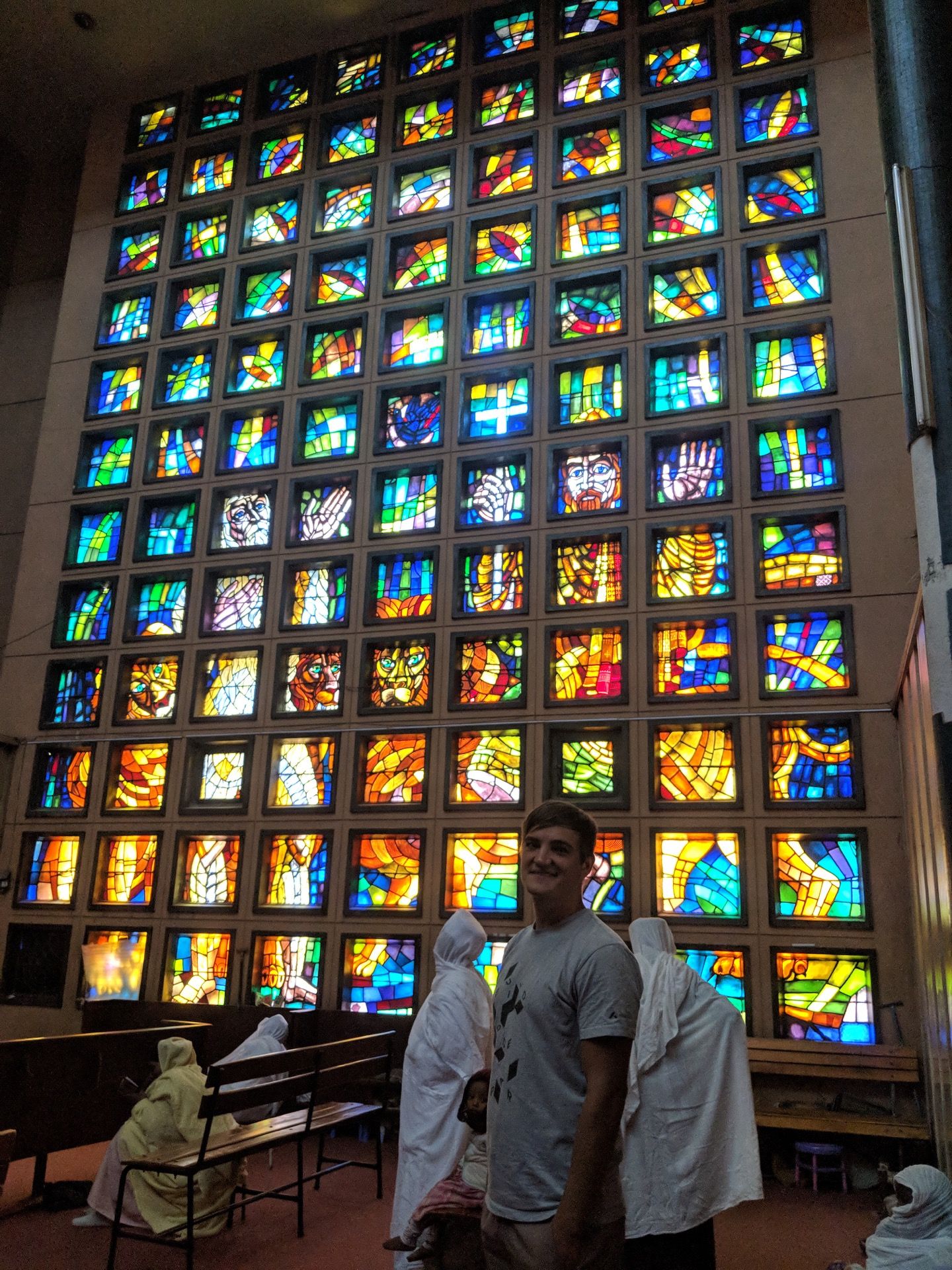
Super tall picture of one side...

... and super wide picture of the other.
We happened to be there on market day, so the road out front of the monastery was teeming with folks selling goats, chickens, and farm goods galore. Definitely the chiller of our two market experiences.
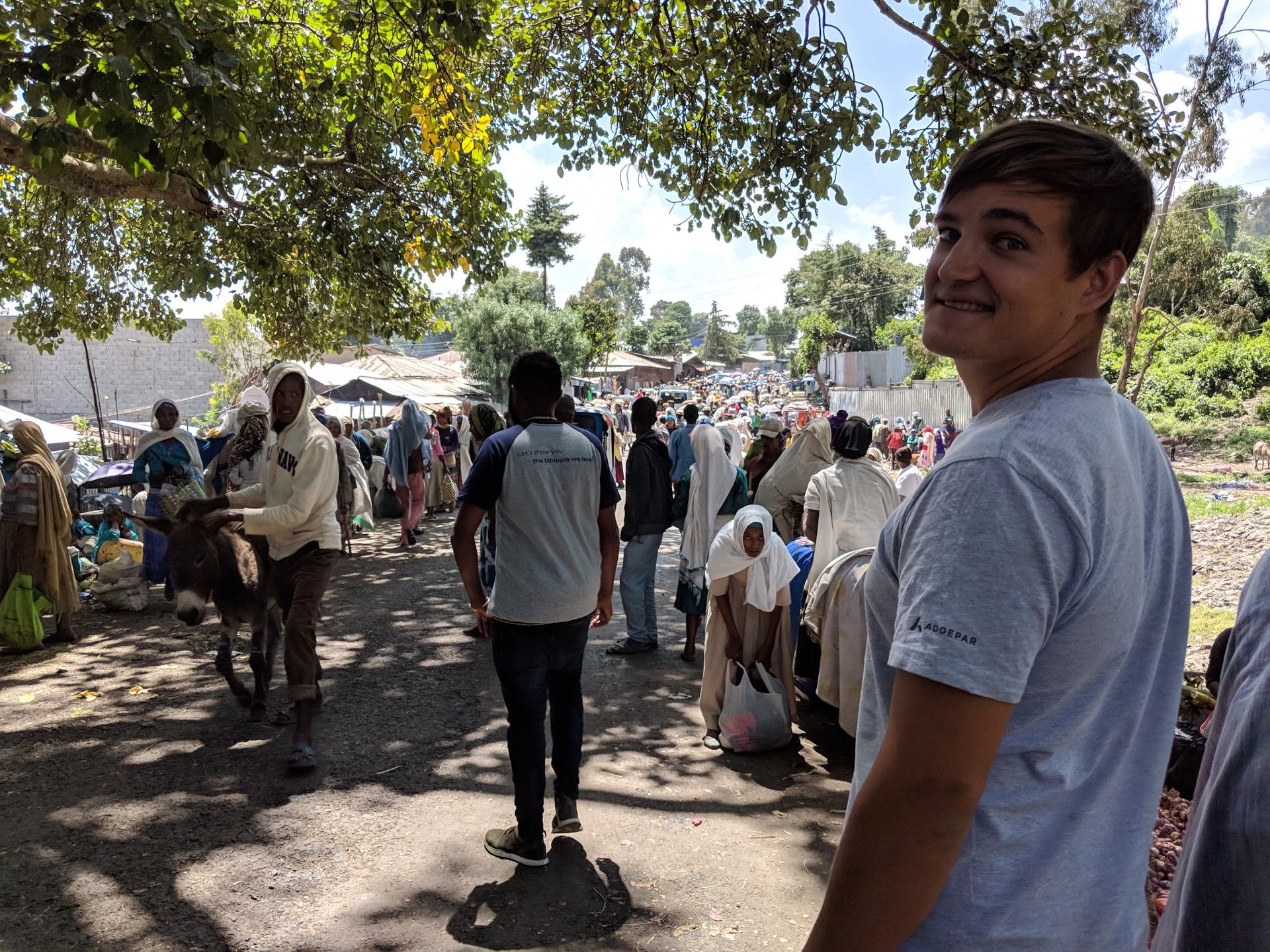
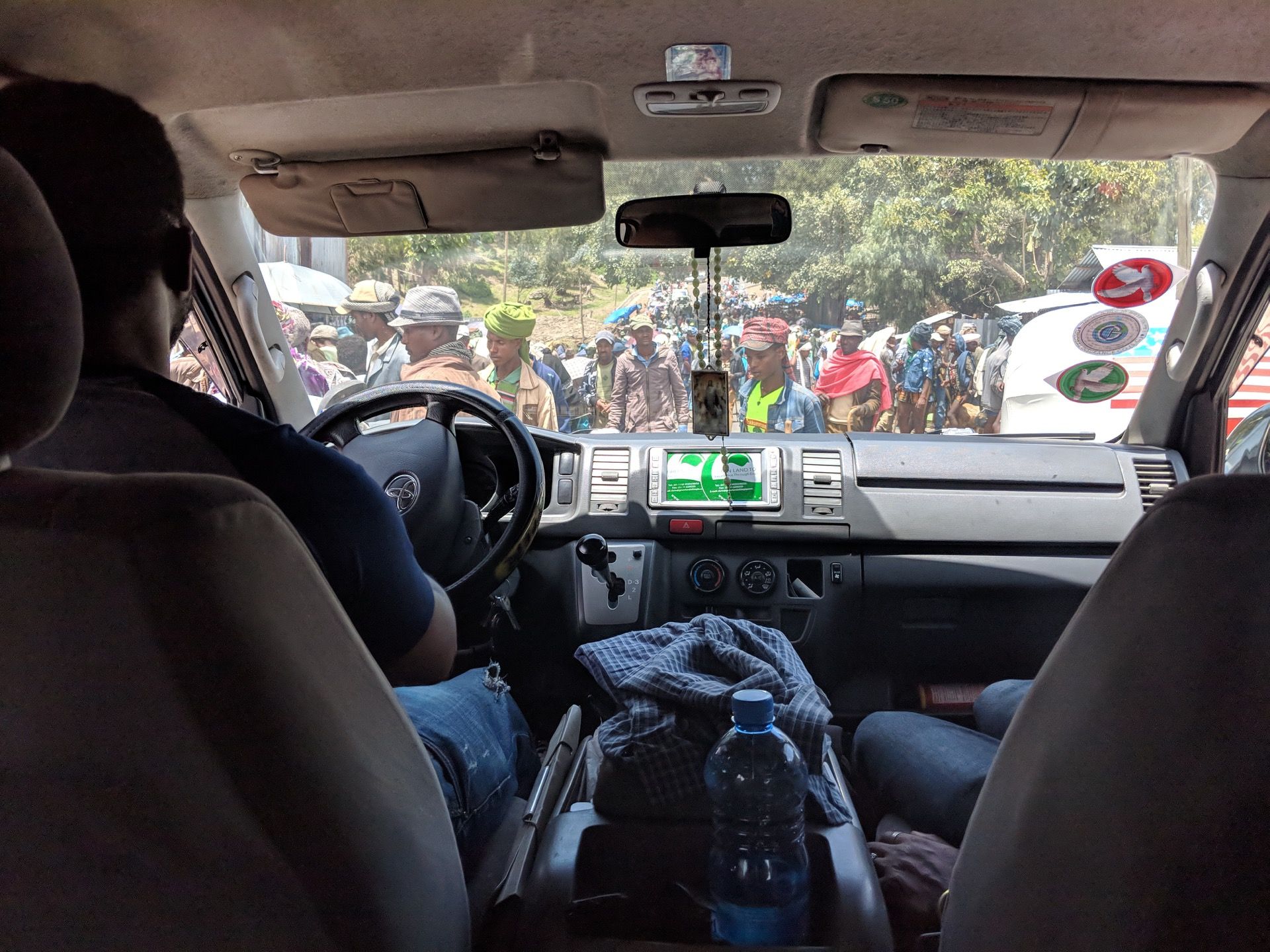
Bartering over goats beats scrap metal negotiations any day of the week.
On the way back we saw a bunch of Gelada Baboons...

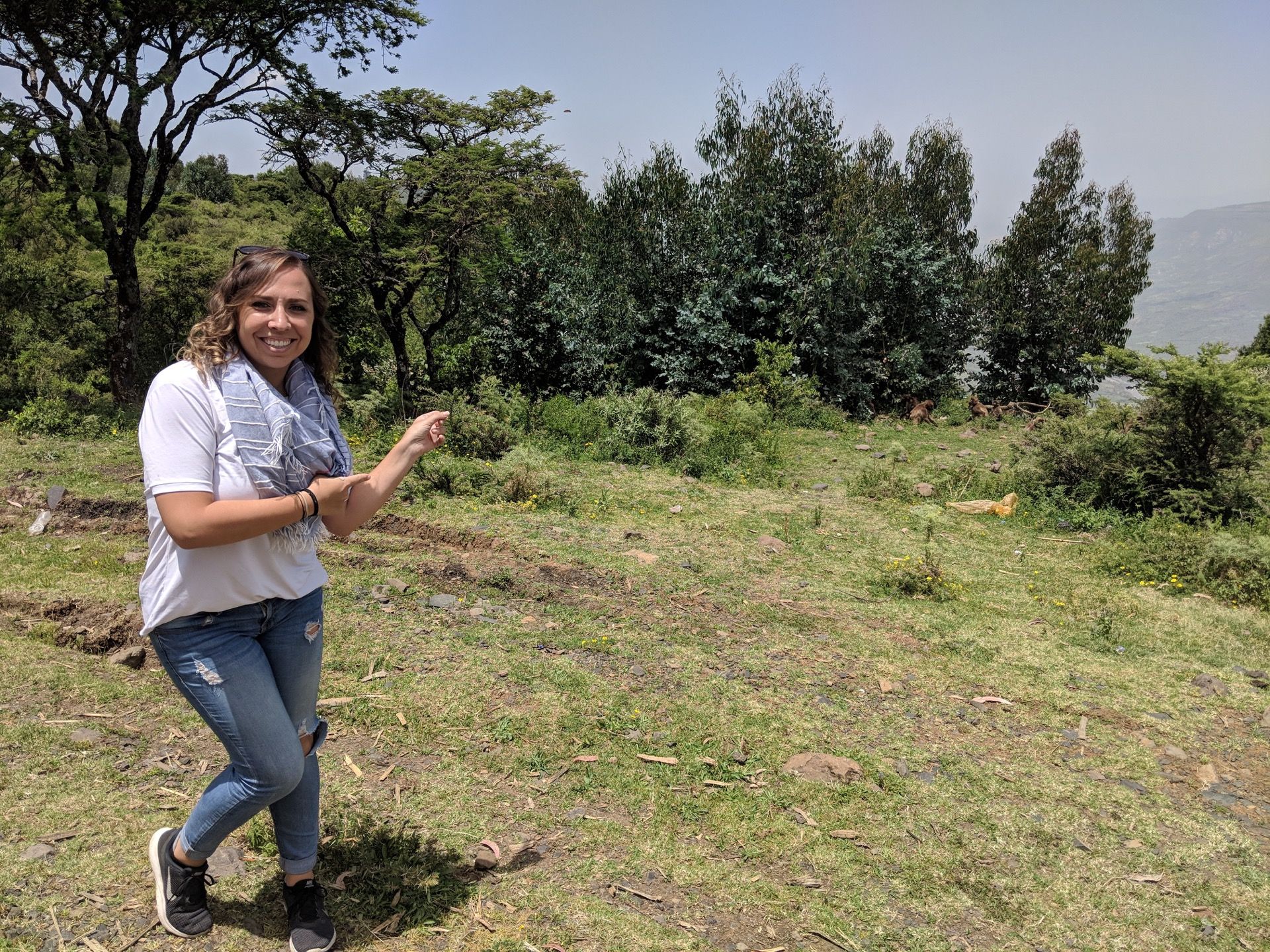
Apparently these guys sleep on crazy-steep cliffs of the nearby gorge.
... had some lunch overlooking the gorge...
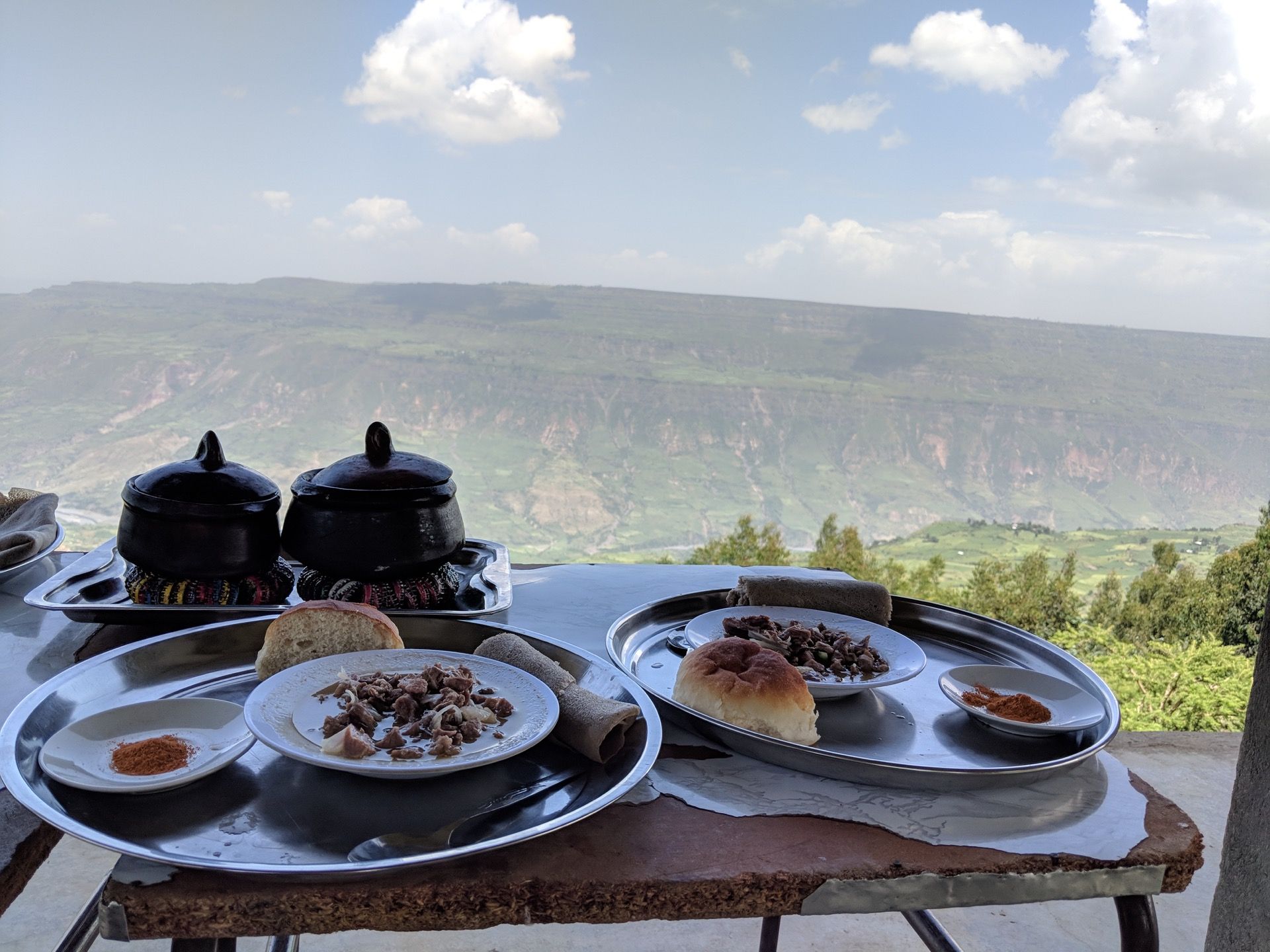
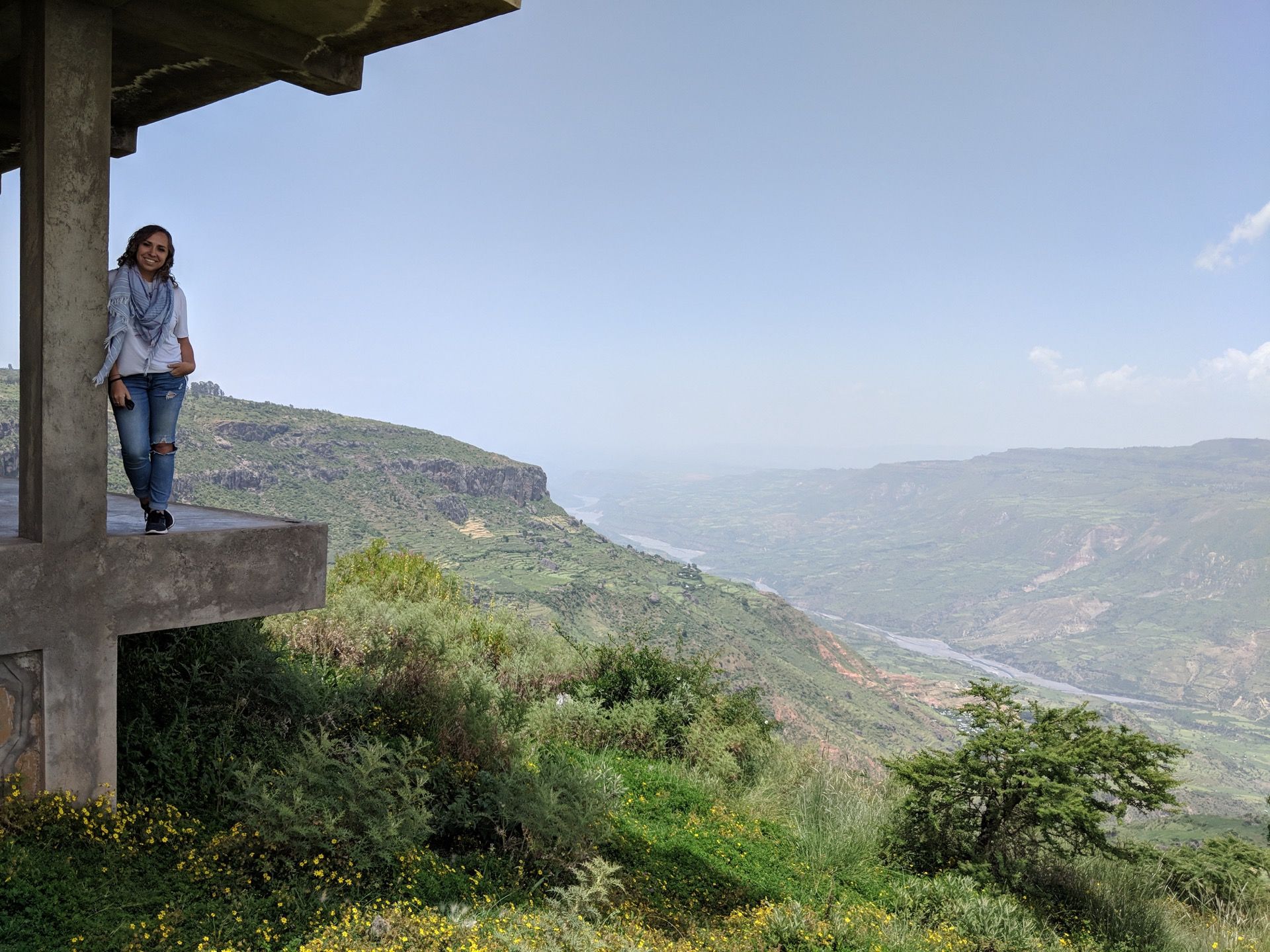
Goat tibs with a side of some danky dank view.
... and ogled the waterfall by the Portuguese Bridge.
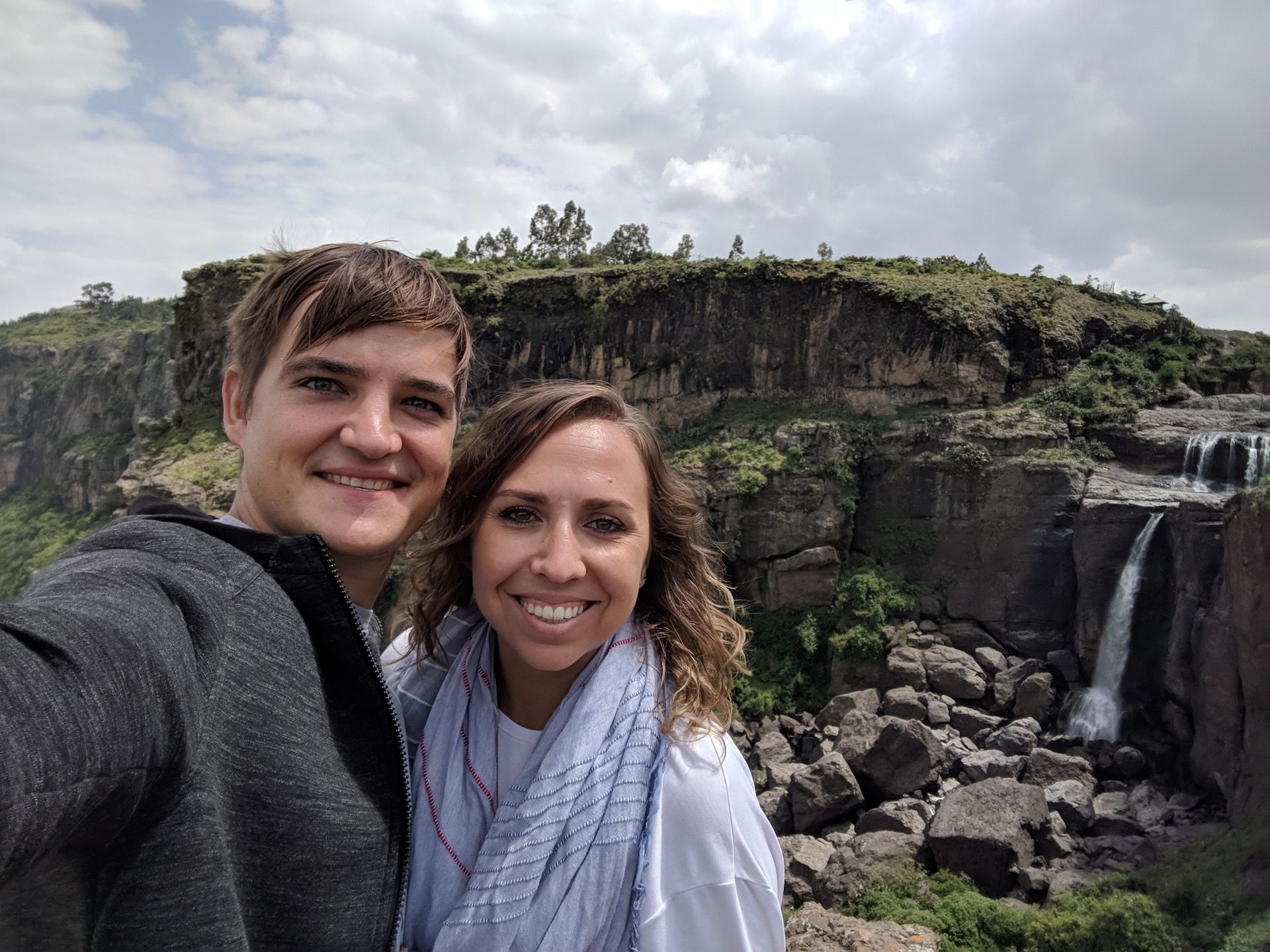
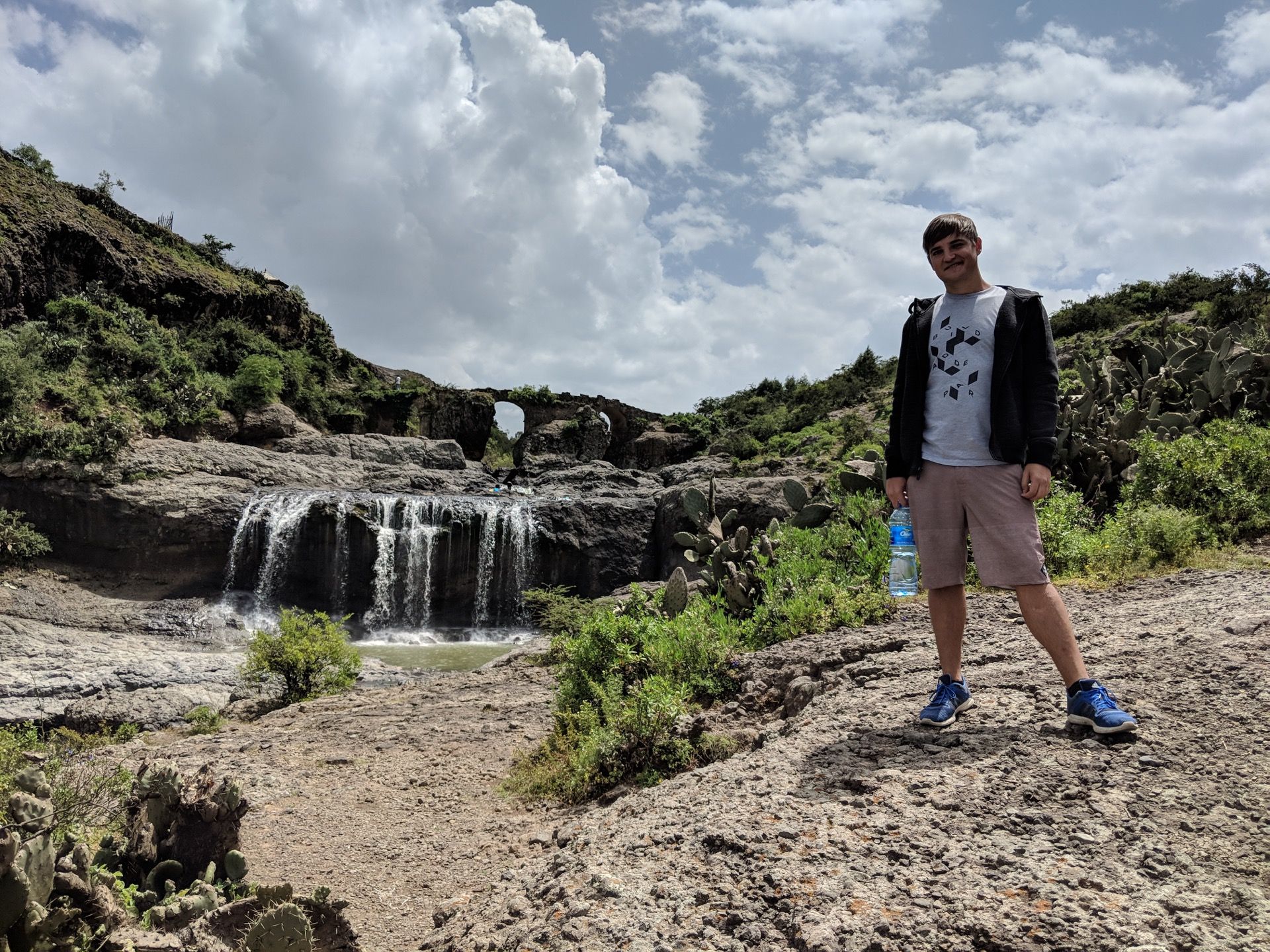
You can kinda see the bridge in the background on the right.

Standing at 8130 ft above sea level, looking down to 4659 ft above sea level.
We concluded our tour de countryside with a traditional coffee ceremony in the nearby village with some of Kibrom's friend, who hosted us at their home.
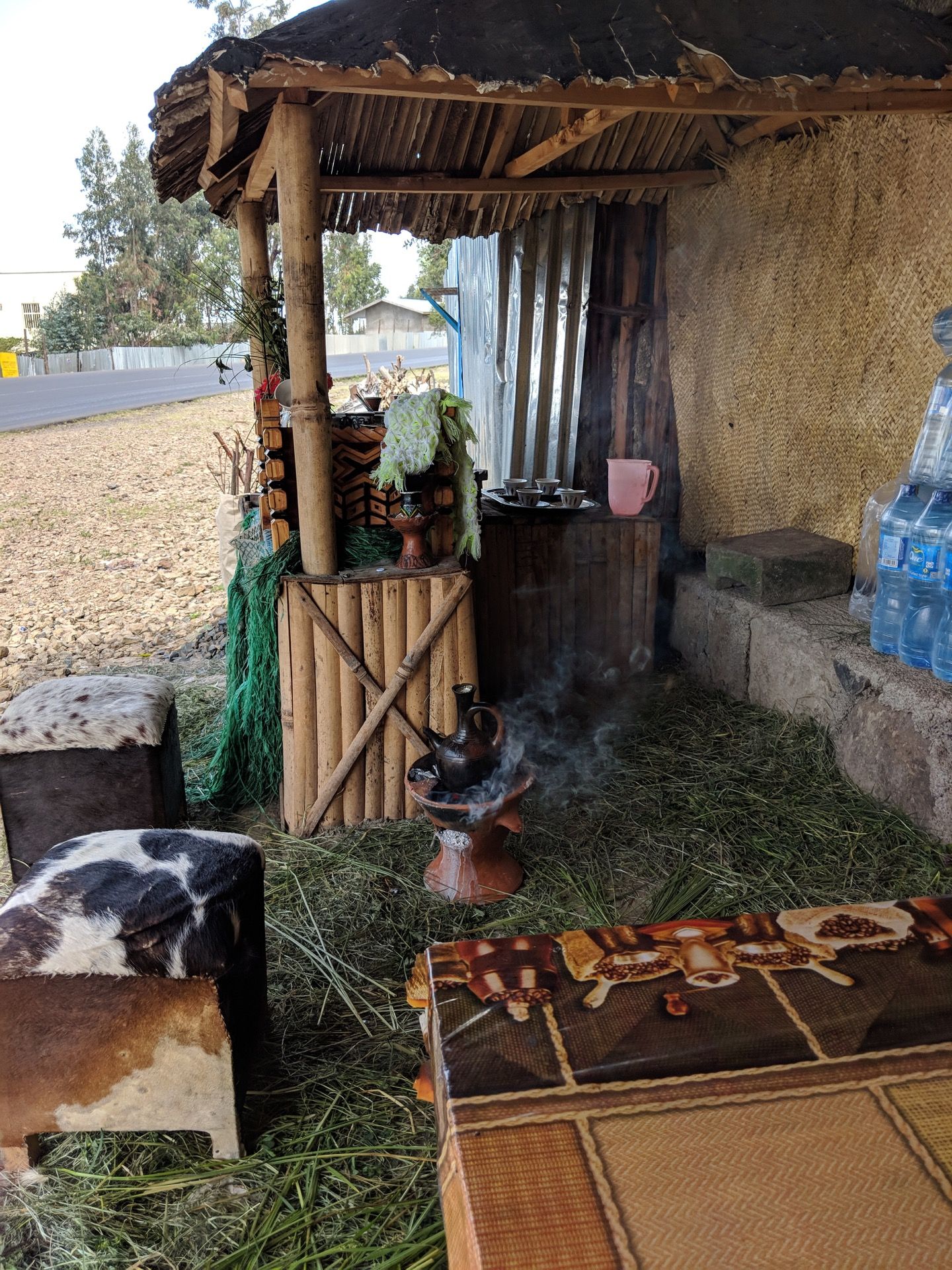
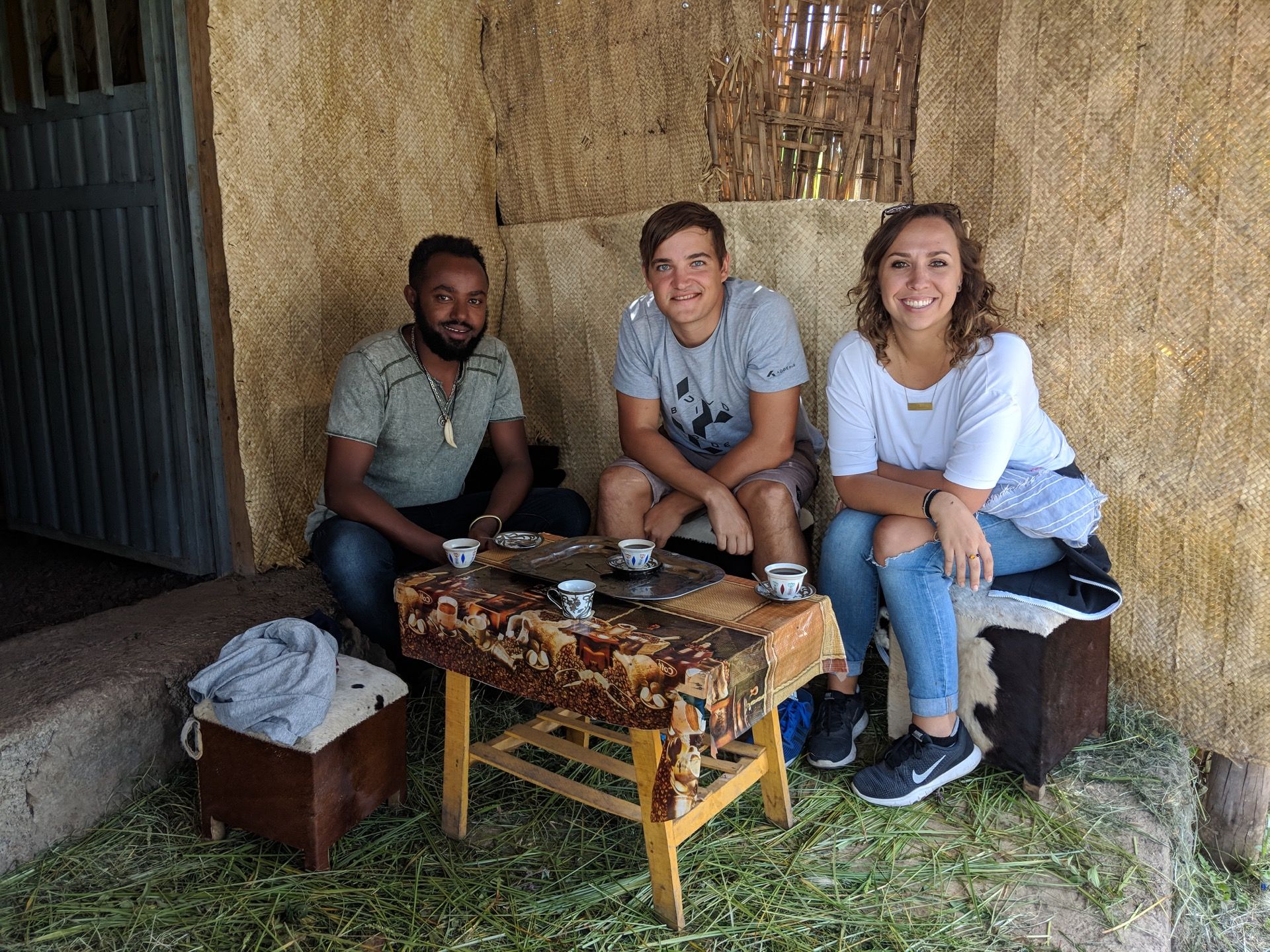
Coffee is traditionally made in a "Jebena" pot on a bed of hot coals.
Back in town for Meskel
We got back to Addis Ababa right in time for Meskel - it turns out we were in town for one of the biggest holidays of the year!
Long sidenote on Meskel: as tradition has it, around 300 A.D. the empress Helena had a dream directing her to light an epic fire and follow the resulting smoke, which would take her to the "true cross" Jesus was crucified on.
Meskel is the celebration of the resulting discovery. Today the celebration basically involves folks lighting epic bonfires all across Ethiopia, the largest of which happens in Meskel square in Addis Ababa.
Interestingly, Catholic tradition also has Helena finding the "true cross," though sadly there's no epic bonfire involved. Orthodox tradition for the win.
Our main man Kibrom told us all about it, and when we mentioned we were thinking about going to Meskel Square to check out the festivities, he said he'd love to take us, off the clock. What a boss!
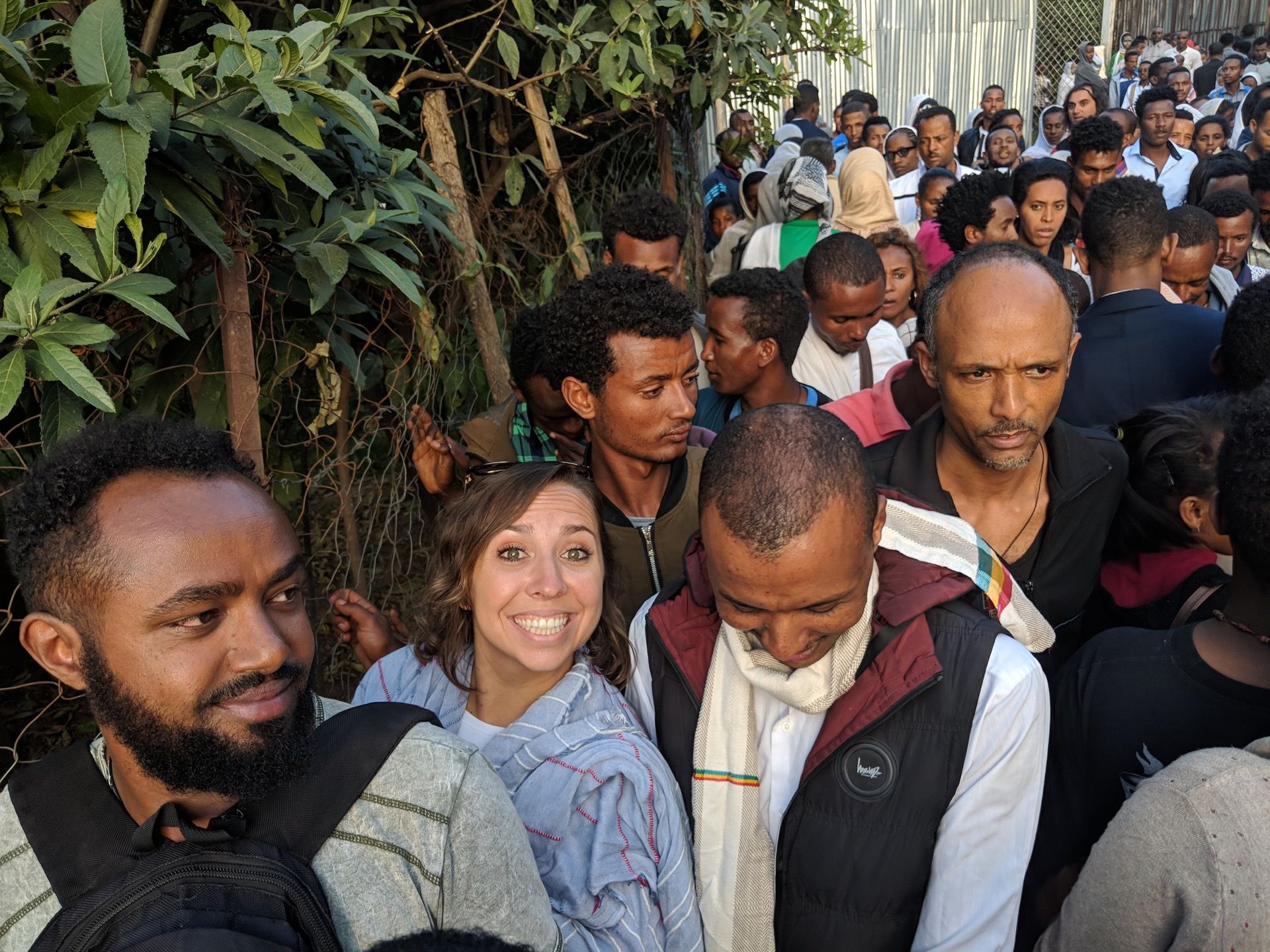
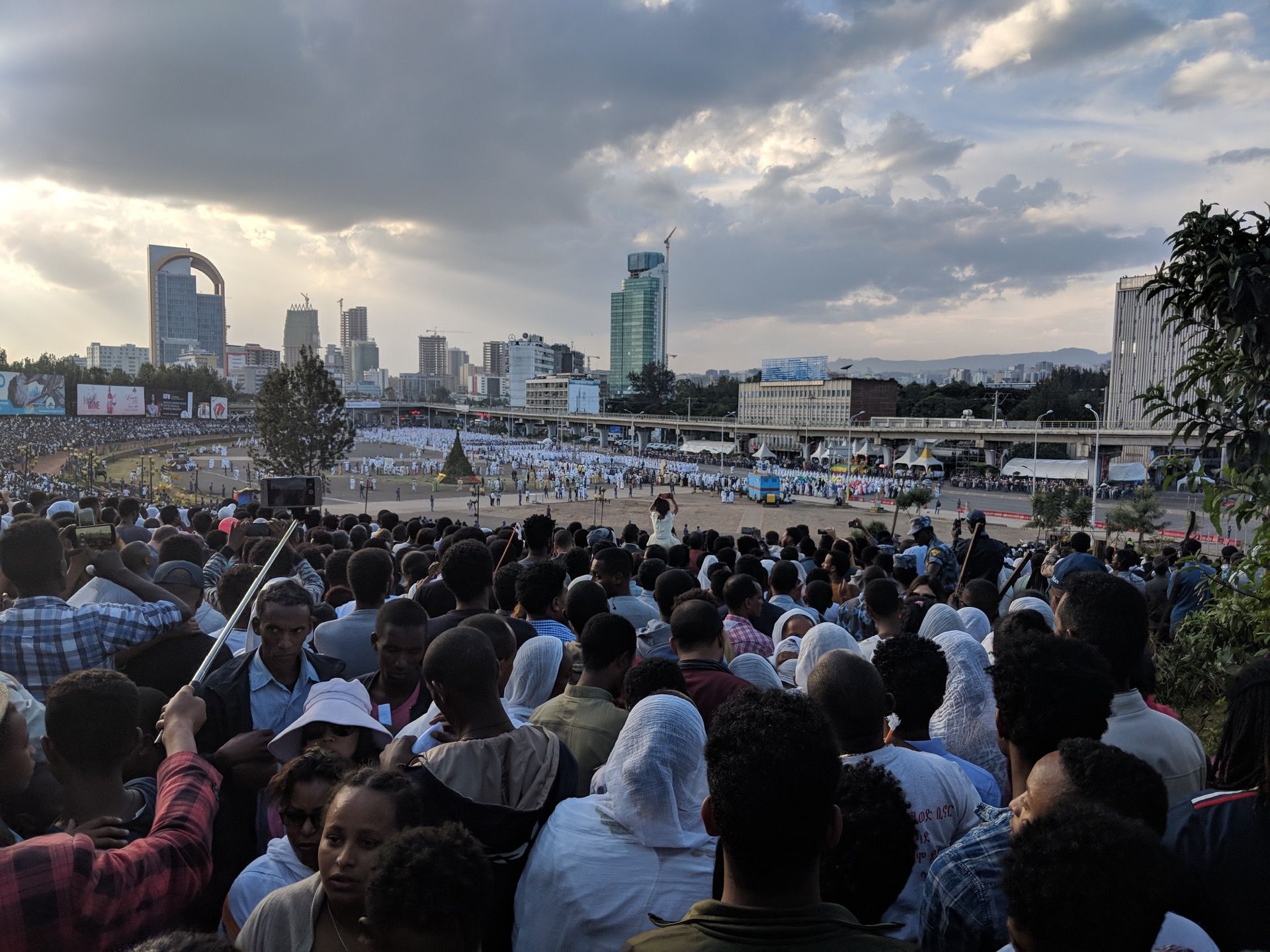
Kibrom, bottom left, guiding us to a view of the square.
We spent the rest of the evening at Meskel Square. It was still daylight when we arrived, at which point not much of interest was going on. As soon as sun started to set, though, things starting getting awesome.
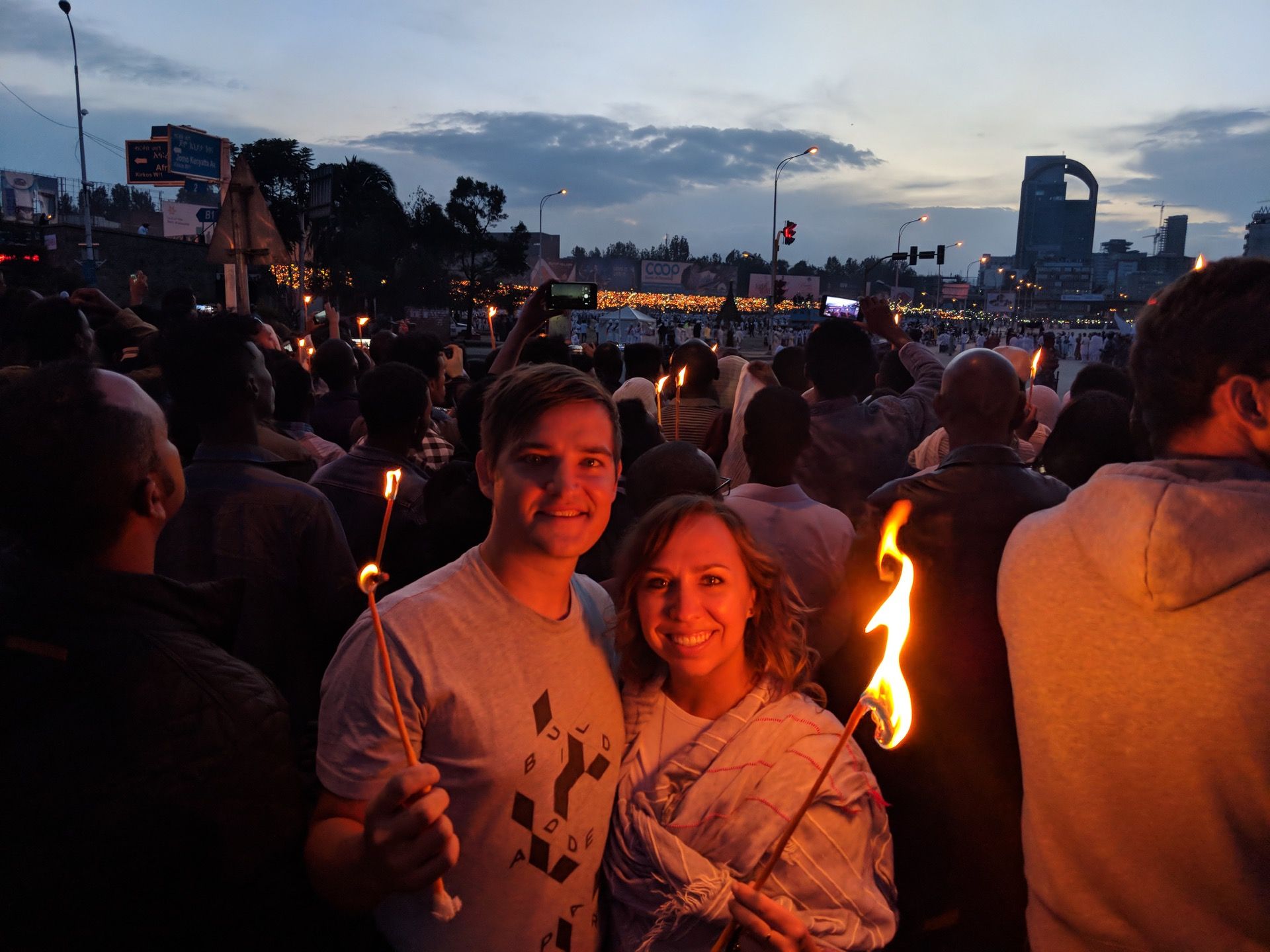
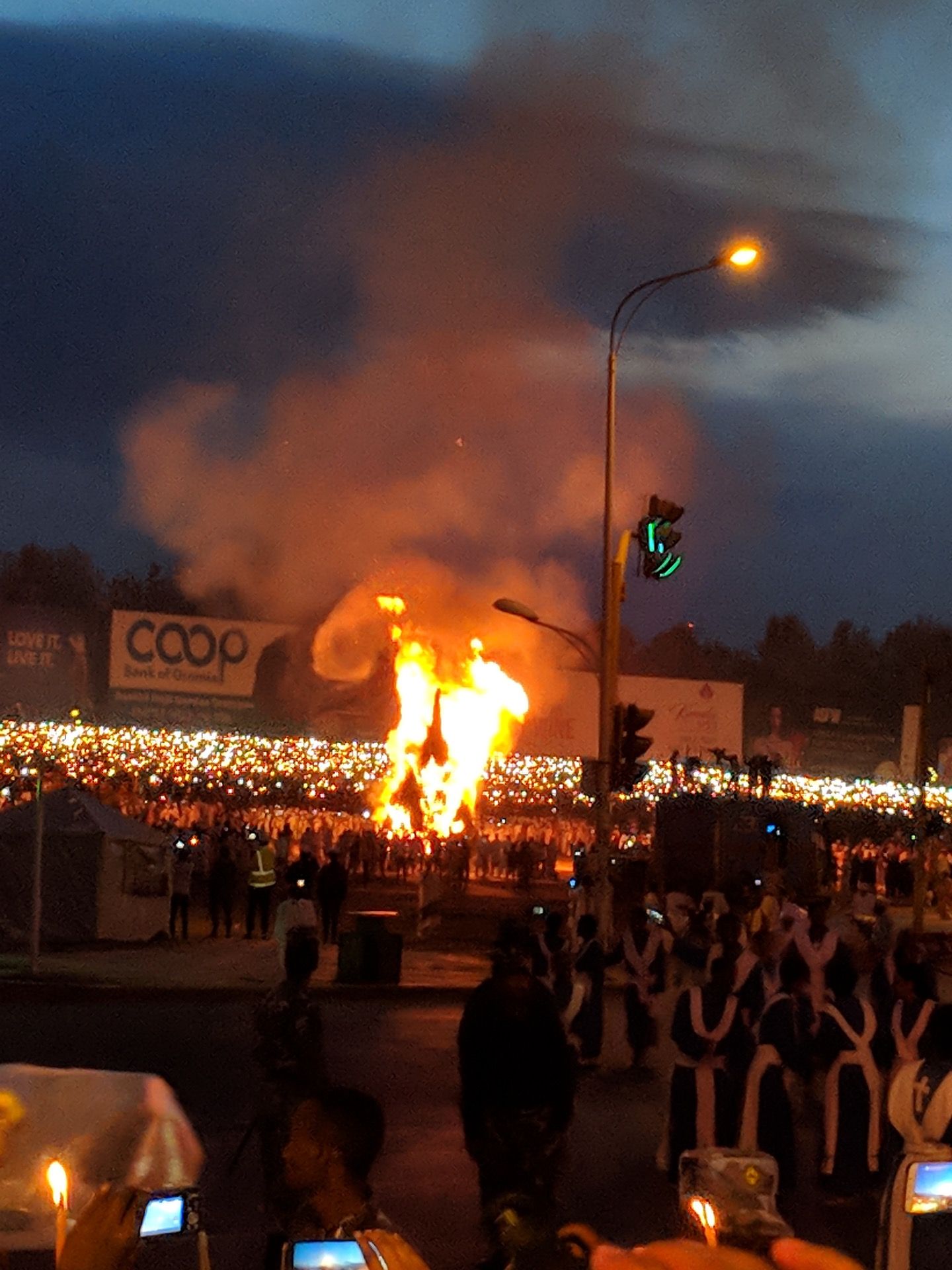
Check out the wall of lights on the hill in the background.
Soon fireworks started blasting, the massive bonfire started raging, and everyone everywhere was whistling and making epic infidel yodel cries. It's like Jesus and the 4th of July teamed up for a night of pyrodelight. Well done, Ethiopia.
Meeting Lucy
Our last day in Addis Ababa was deliberately, delightfully low-key. Since it was Meskel, everybody had the day off, and we were more than happy to follow suit.
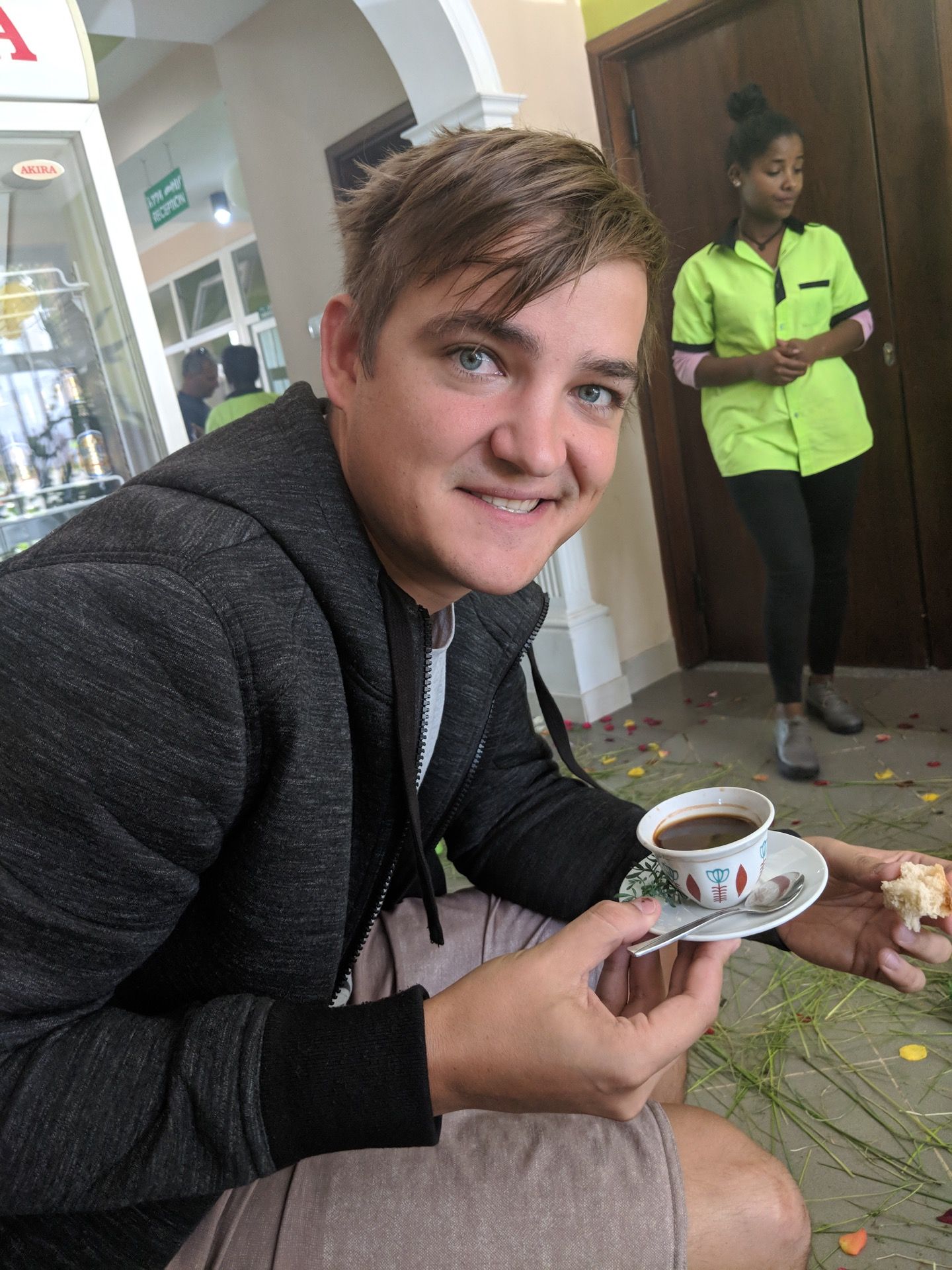
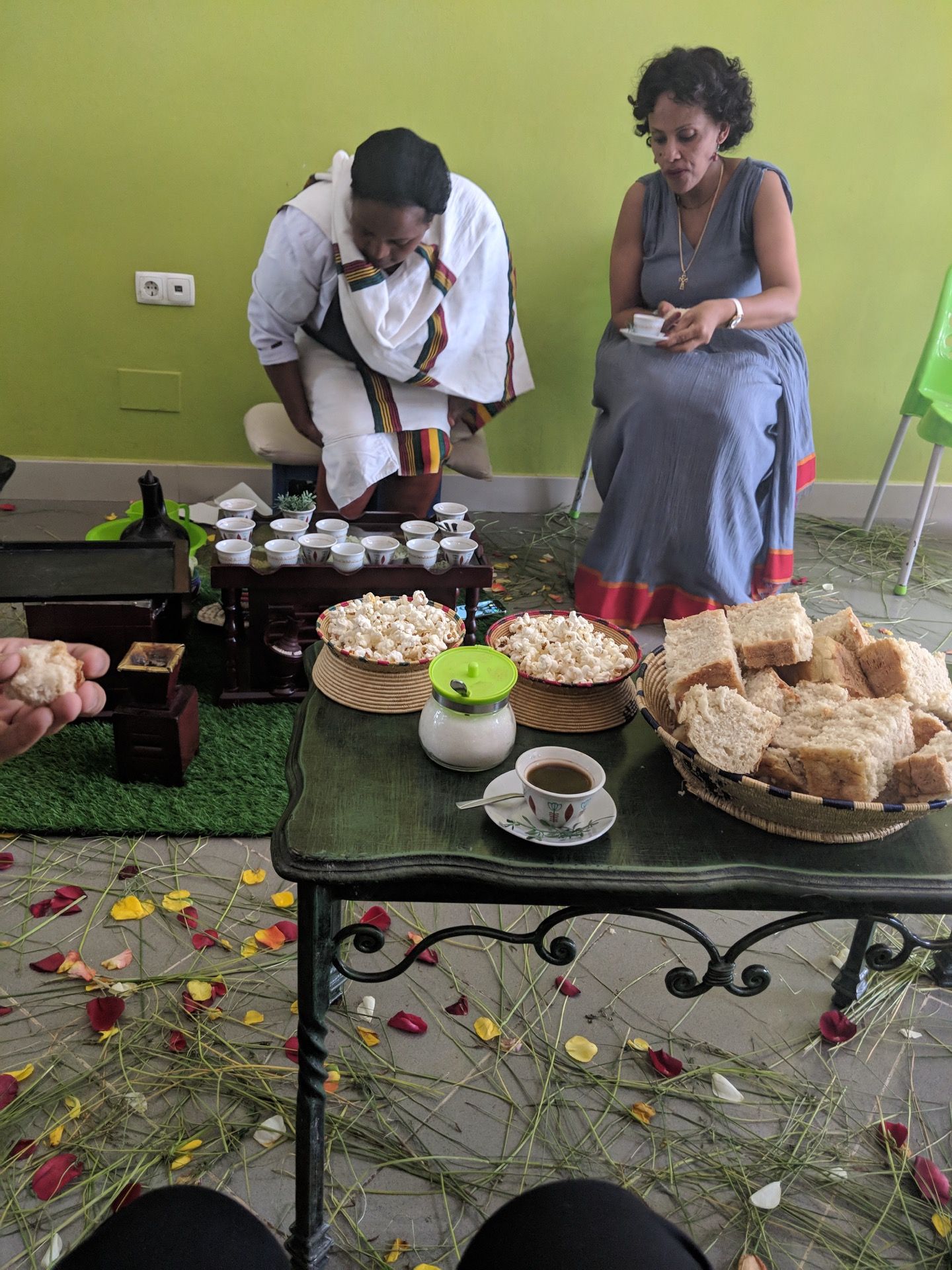
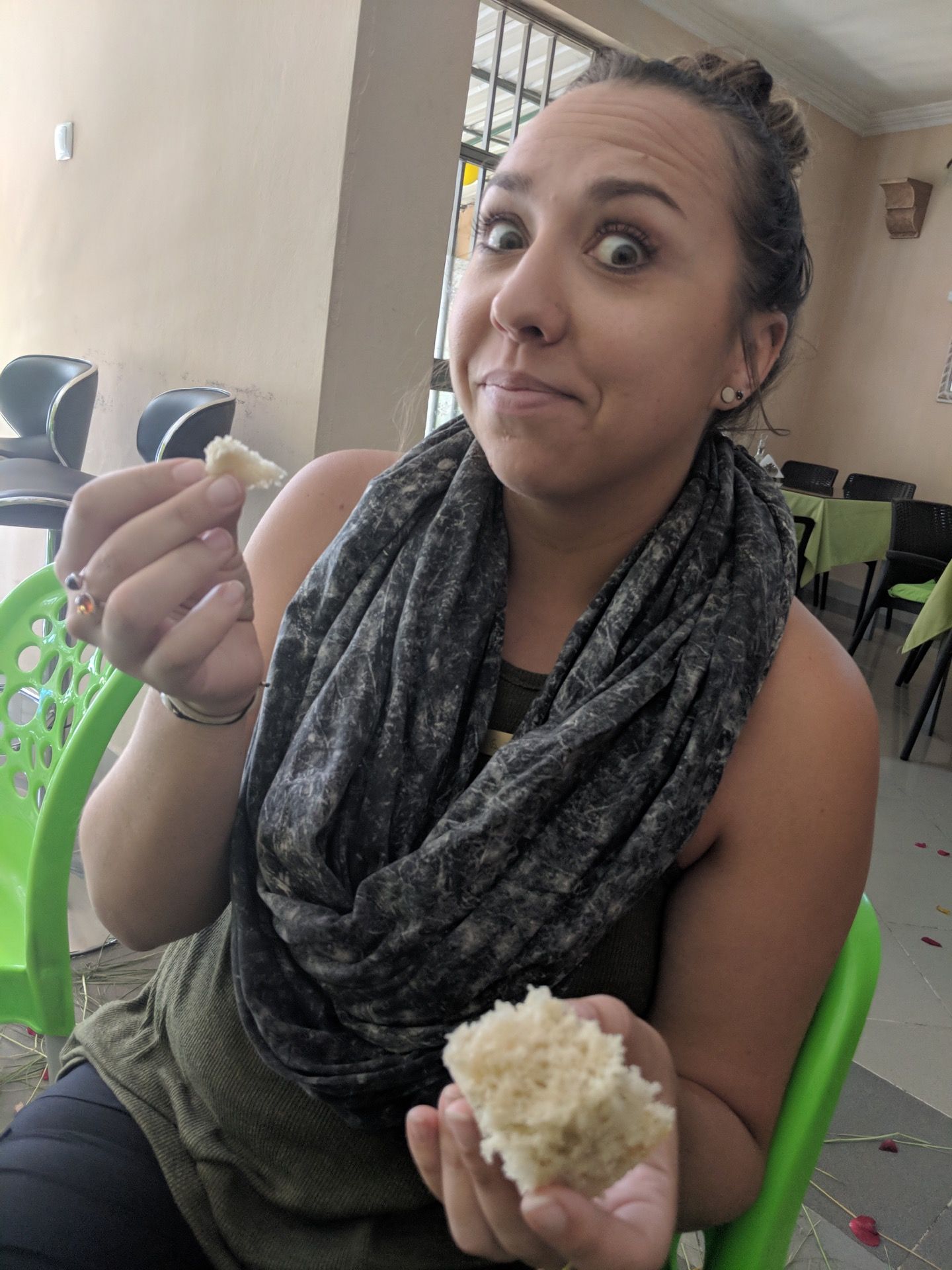
Our hotel hosted a coffee ceremony, complete with some delicious, freshly-baked "Dabo" bread.
Our productive activity of the day was visiting the National Museum of Ethiopia, famous for being the home of "Lucy."
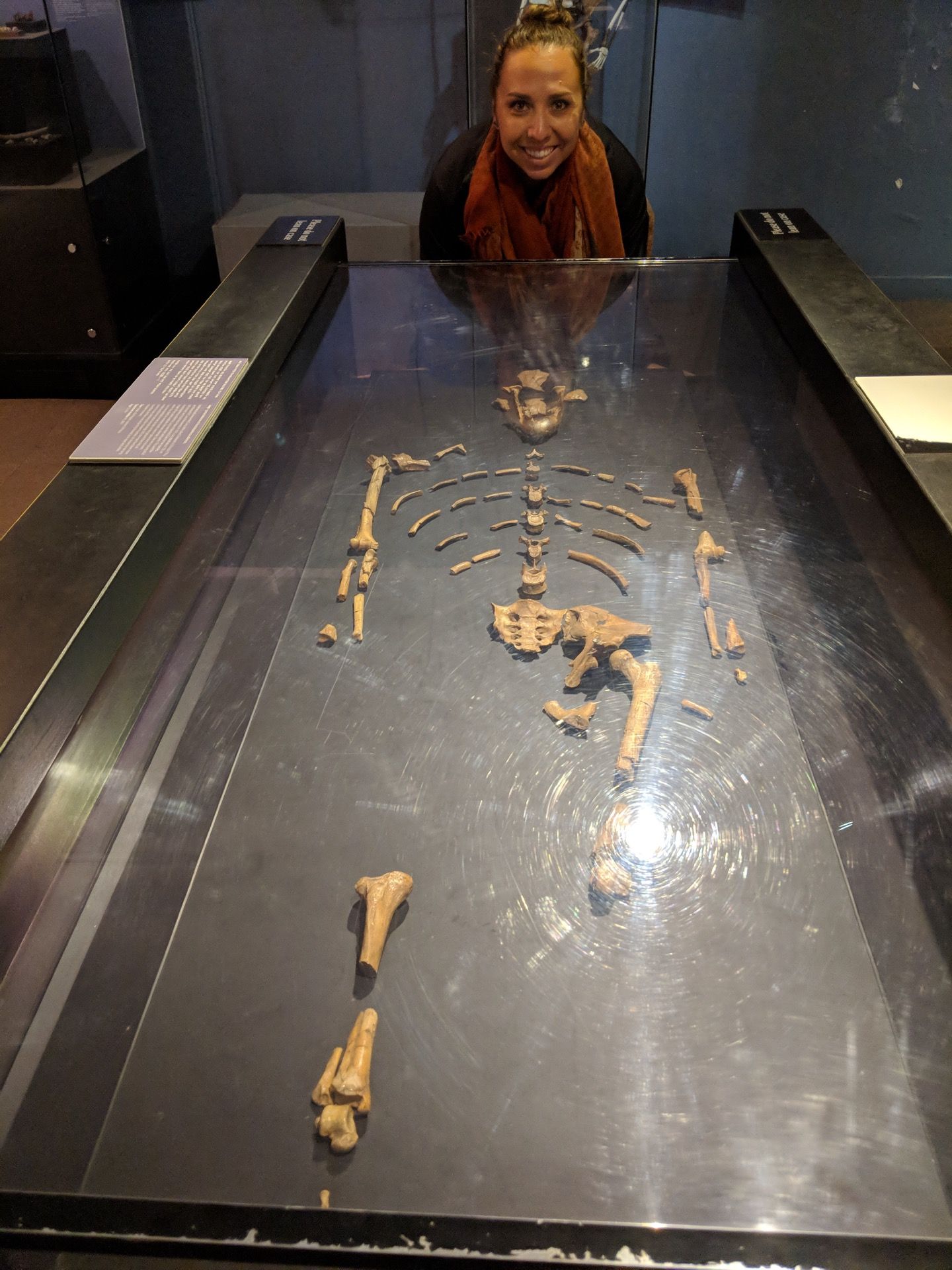
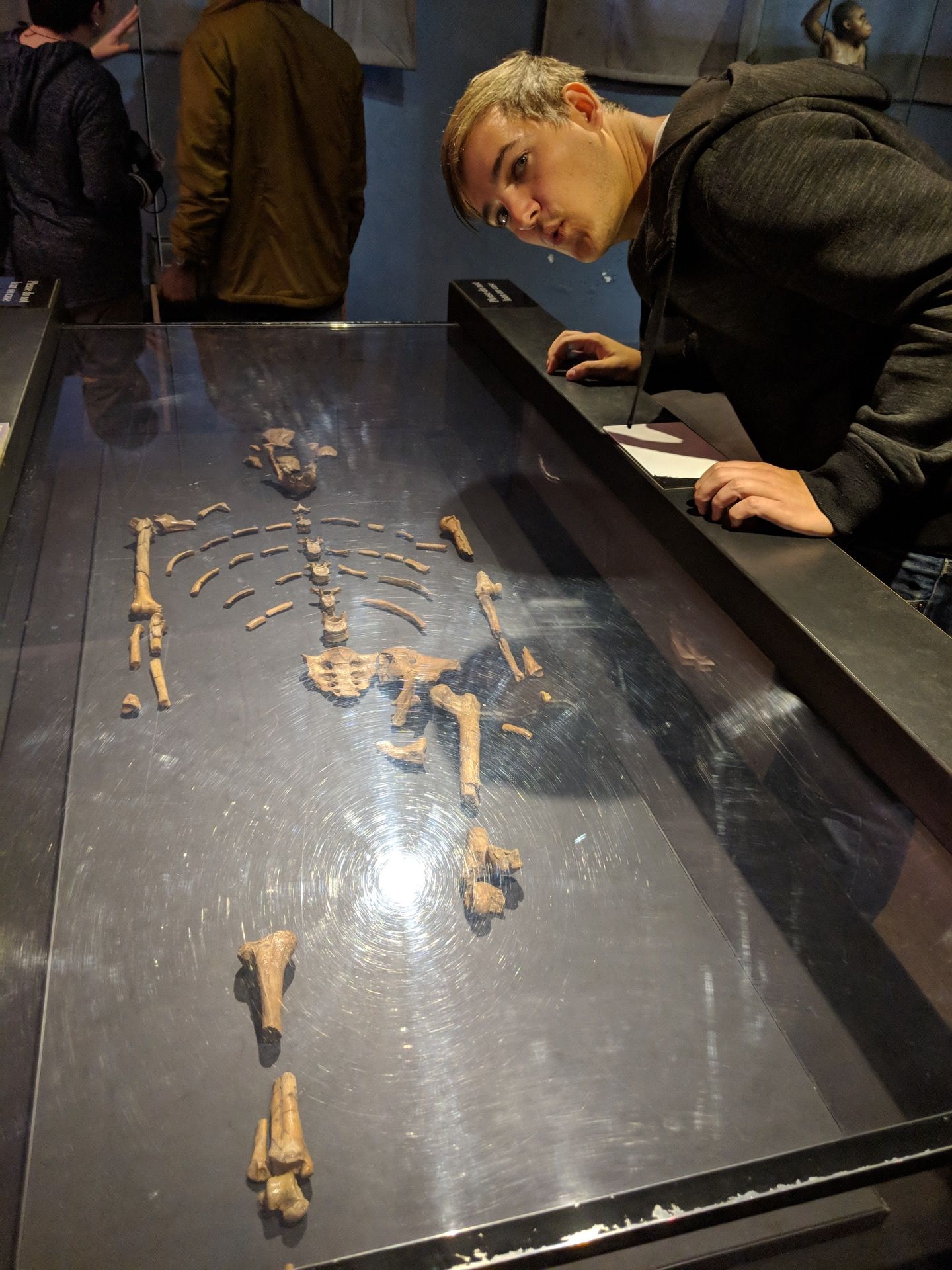
This is actually just a cast, they keep the real thing safely stashed in back.
The prehistoric exhibit in the basement was pretty cool, and was all the more exciting due to a power outage that occurred while we were there (we spent about five minutes viewing fossils by the light of my cellphone). The rest of the museum, though, was pretty bland. On the plus side, entry was only 10 birr (for shame, Holy Trinity Church; for shame).
We concluded our trip with a return visit to the Beer Garden Inn for some more of our favorite Ethiopian beer...
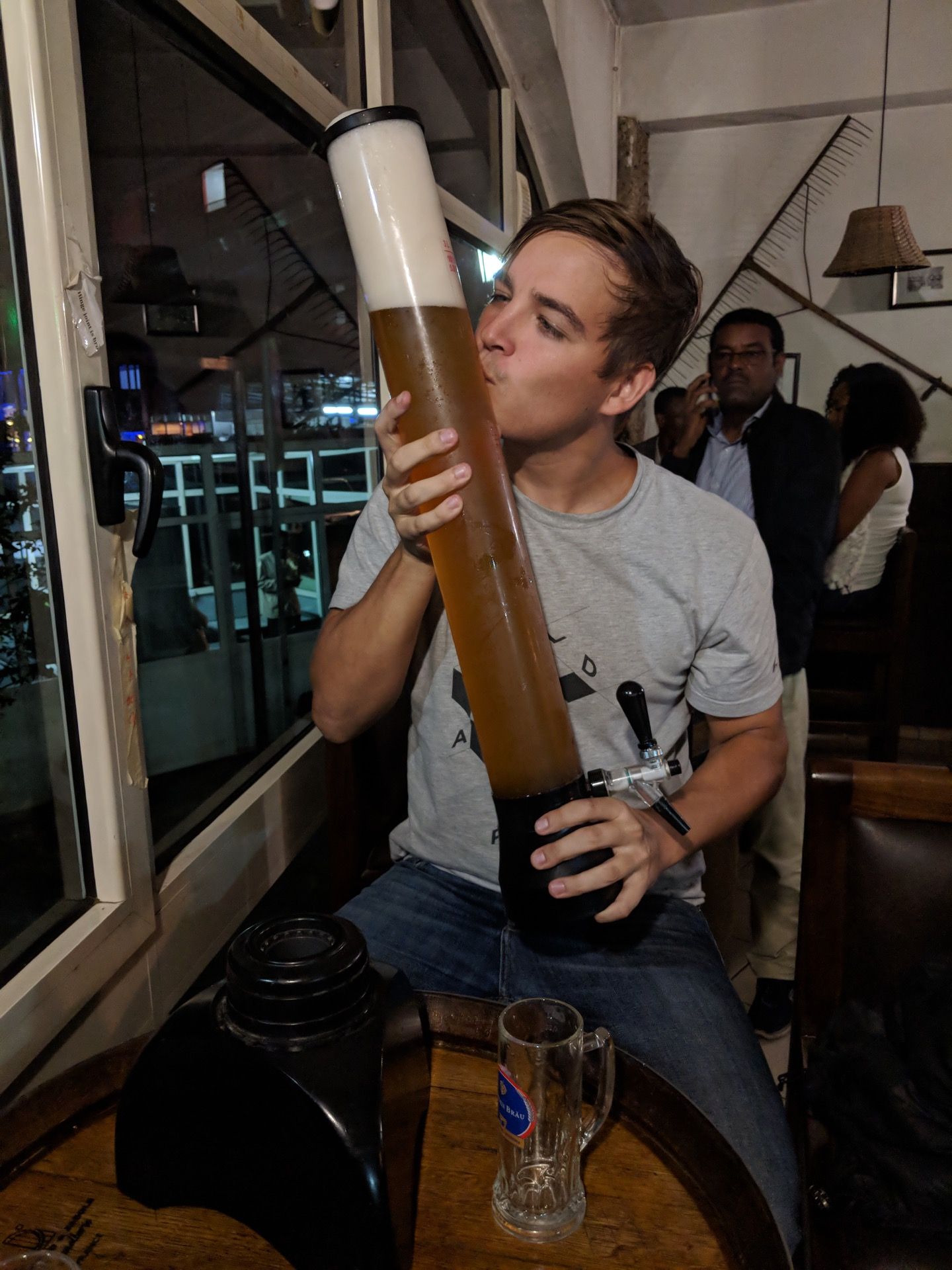
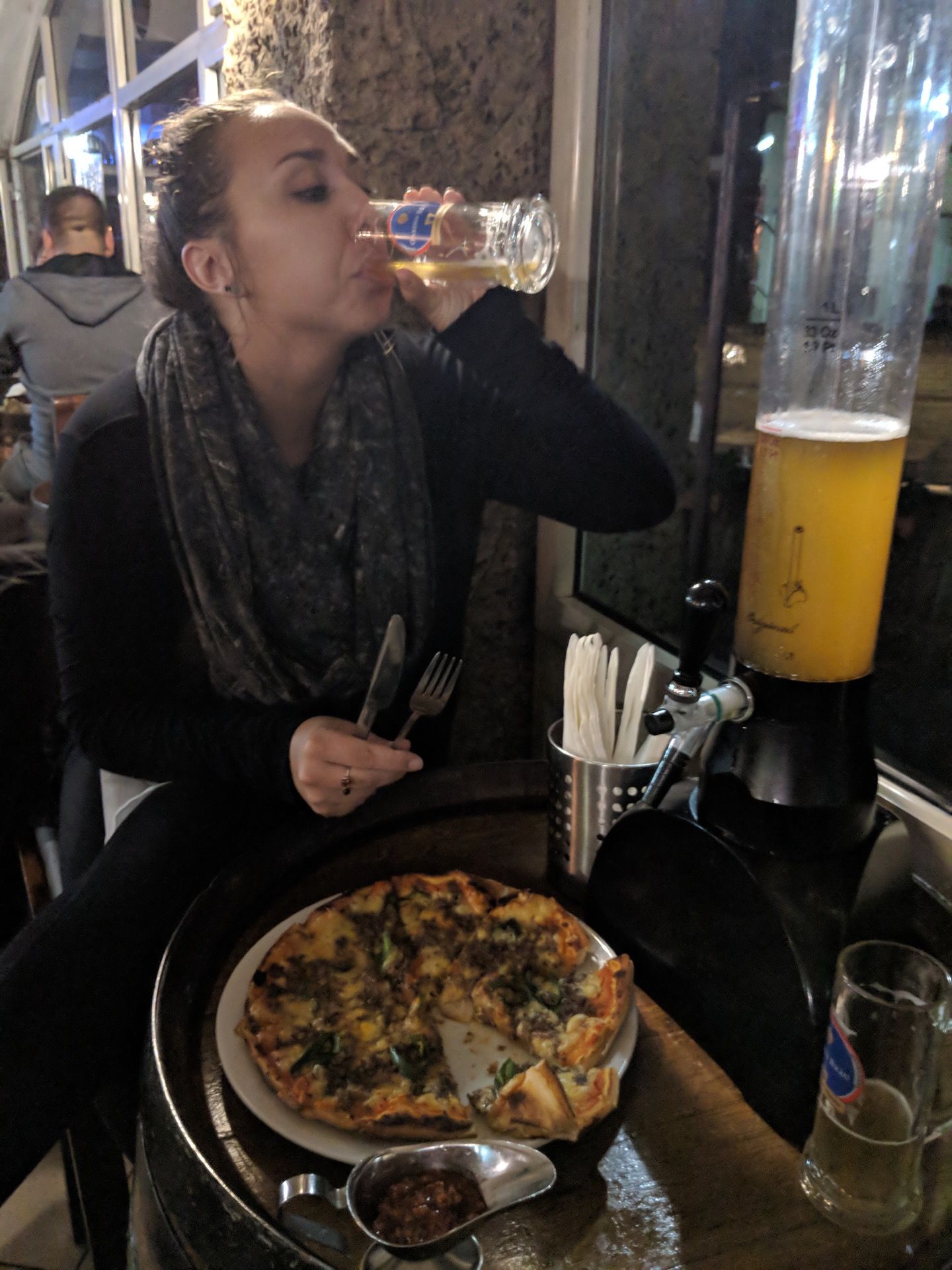
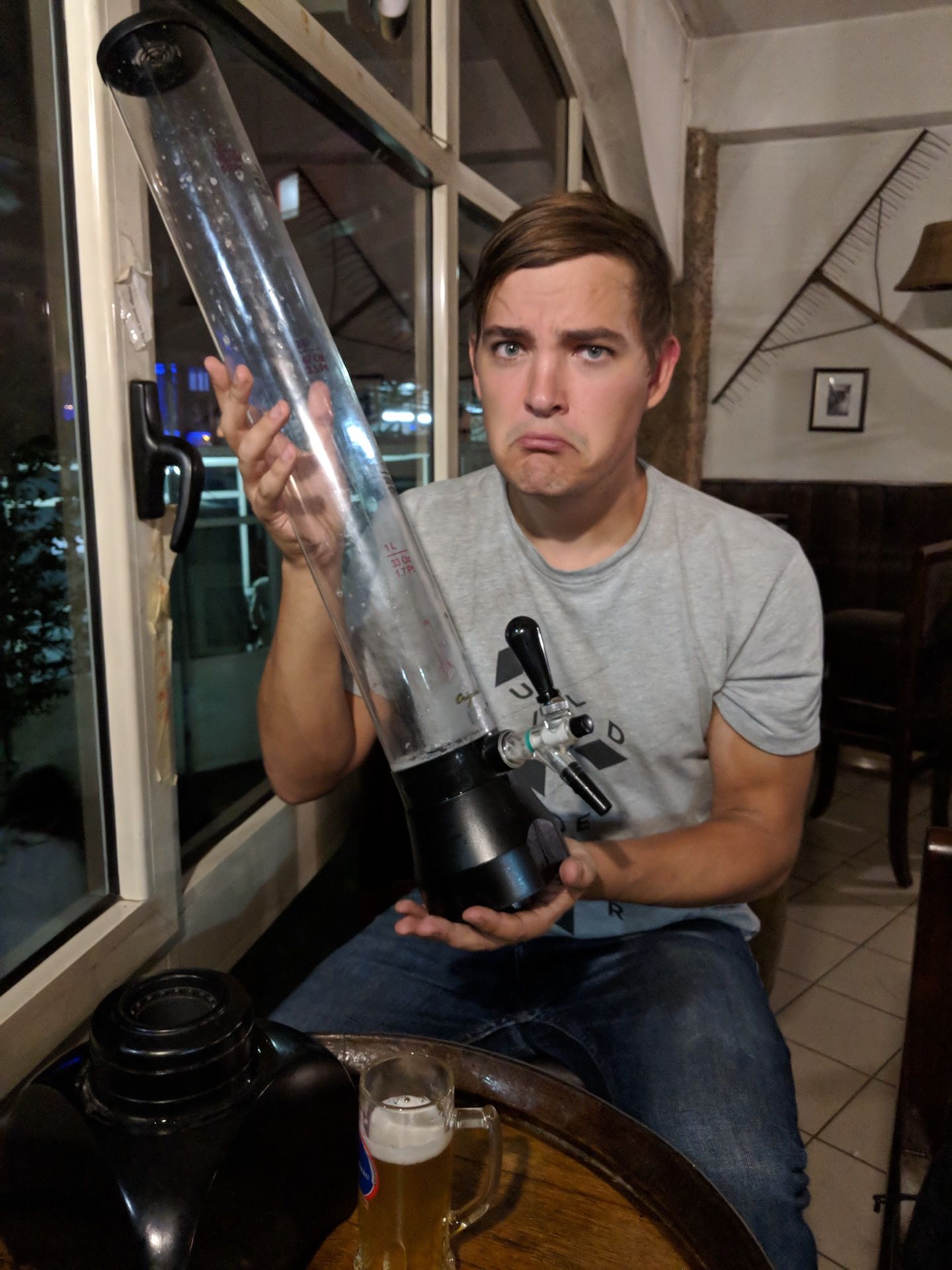
Serves me right for sharing my beer with Soph.
... as well as some, uh, let's call it "Italian-style" Injera.
Parting thoughts
On poverty: despite being one of the more economically advanced countries in Africa, Ethiopia came across as a poverty-stricken place. Outside of the city I expected it, but in Addis Ababa it was a bit of a surprise. Lean-to's were strewn about, jobless folks loitered around, and shanty-businesses had that scraping-to-get-by kinda feel.
On people: folks in Ethiopia were... somewhat indifferent to us. Service, in restaurants and otherwise, had a distant, I'm-bored-to-be-here feel to it, and strangers generally weren't as friendly as I'd expected. There were, however, some shining exceptions: our awesome guide Kibrom, the great hotel staff, and the super nice restaurant manager of Vaccari Restaurant who gave me ride through a sketchy neighborhood at night to take me to an ATM.
On culture: this is the reason to come to Ethiopia. There are no Safaris, no big natural attractions, and no sun-soaked beaches to bath at, but the culture is thick. The way in which culture and religion are braided so as to be indistinguishable; the quirks of calendar, clock, and language; and a rich history stretching back to the genesis of humanity make for a unique place, and made for a uniquely memorable trip.
